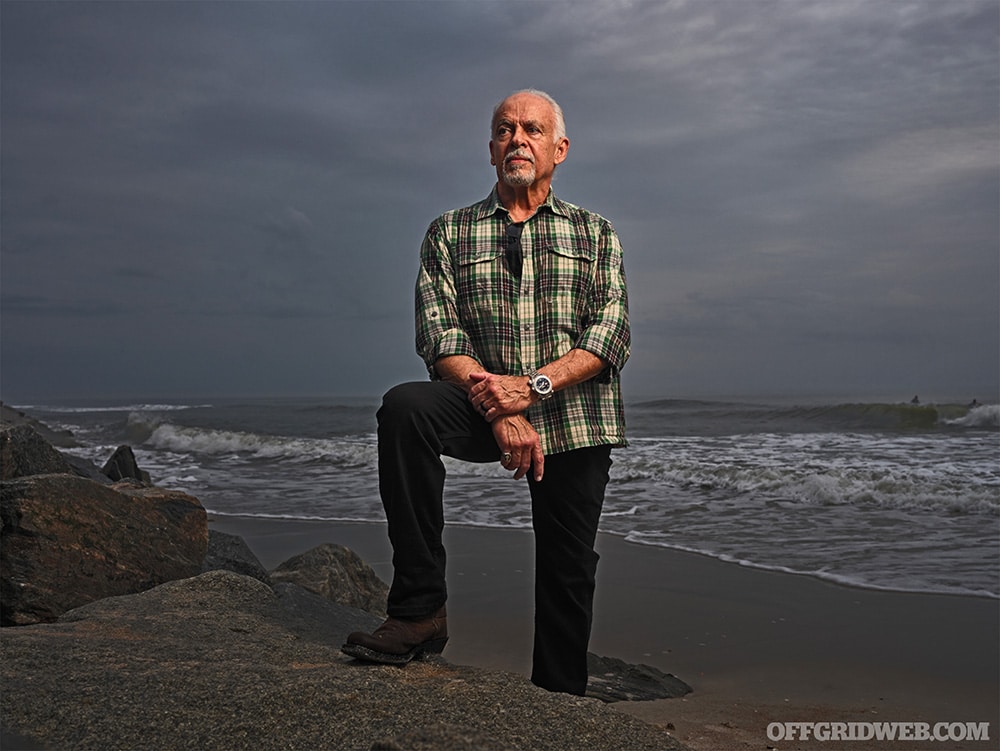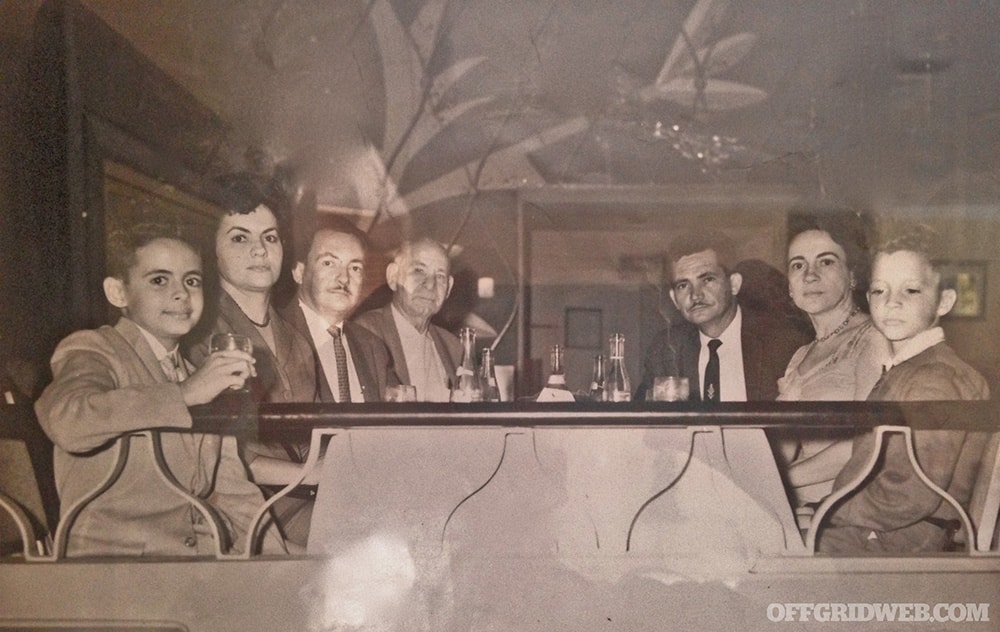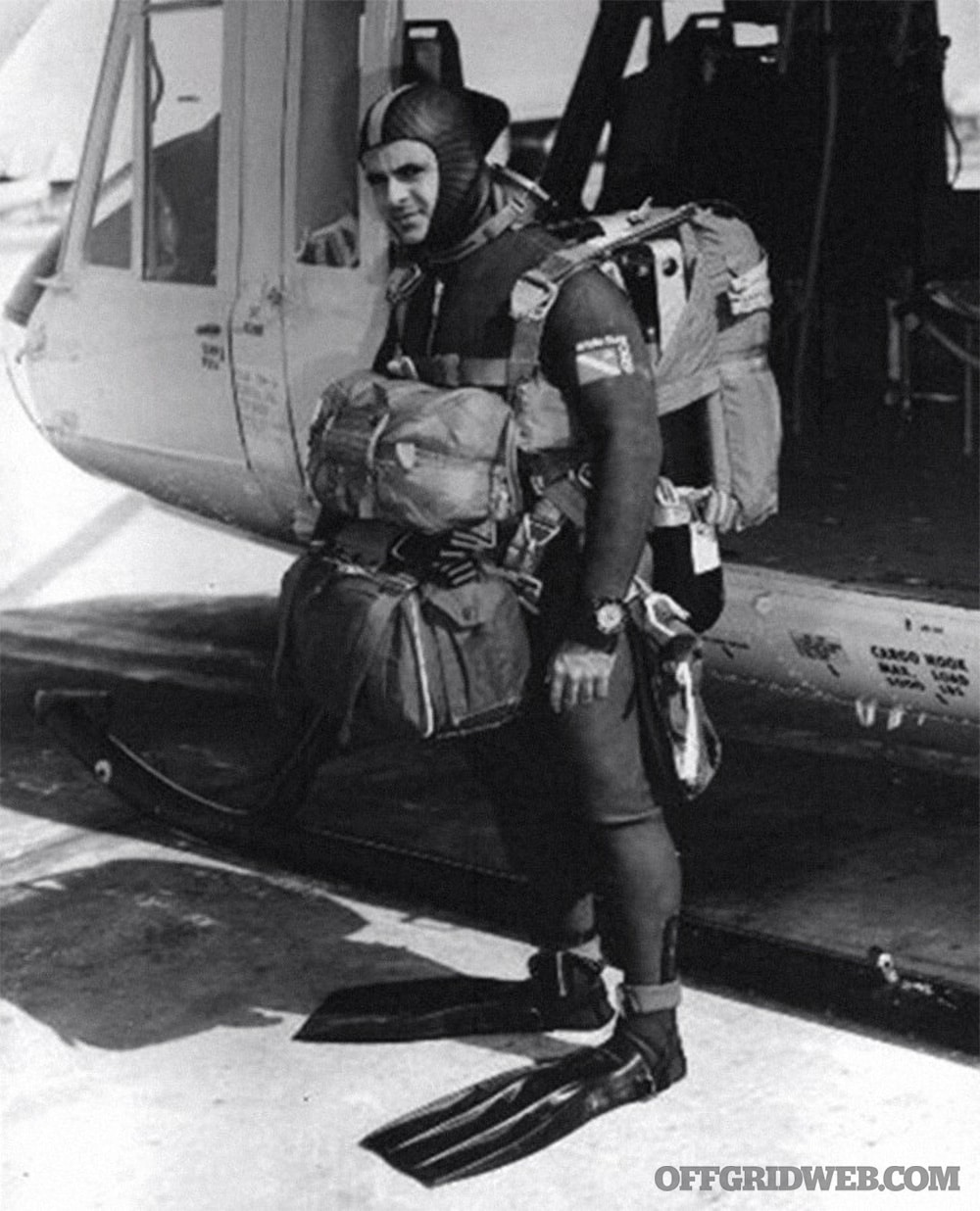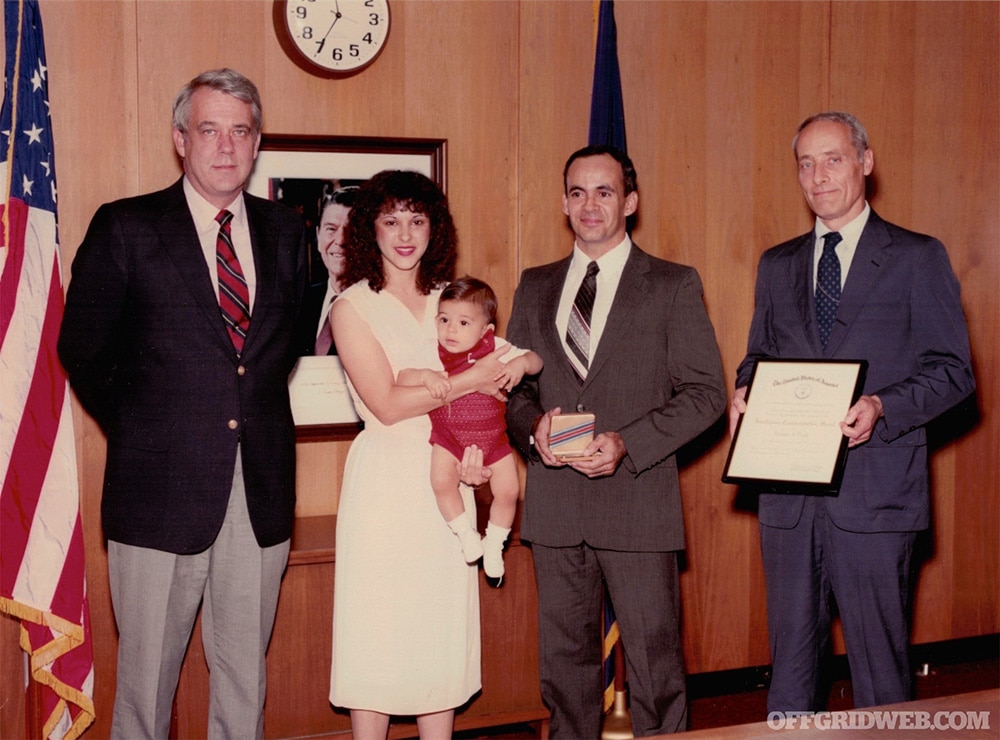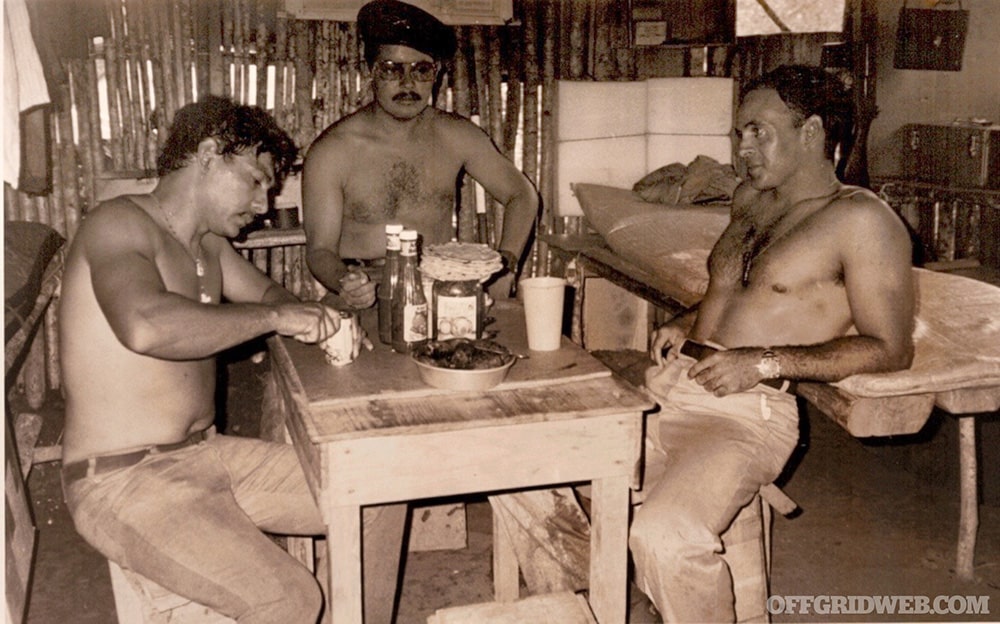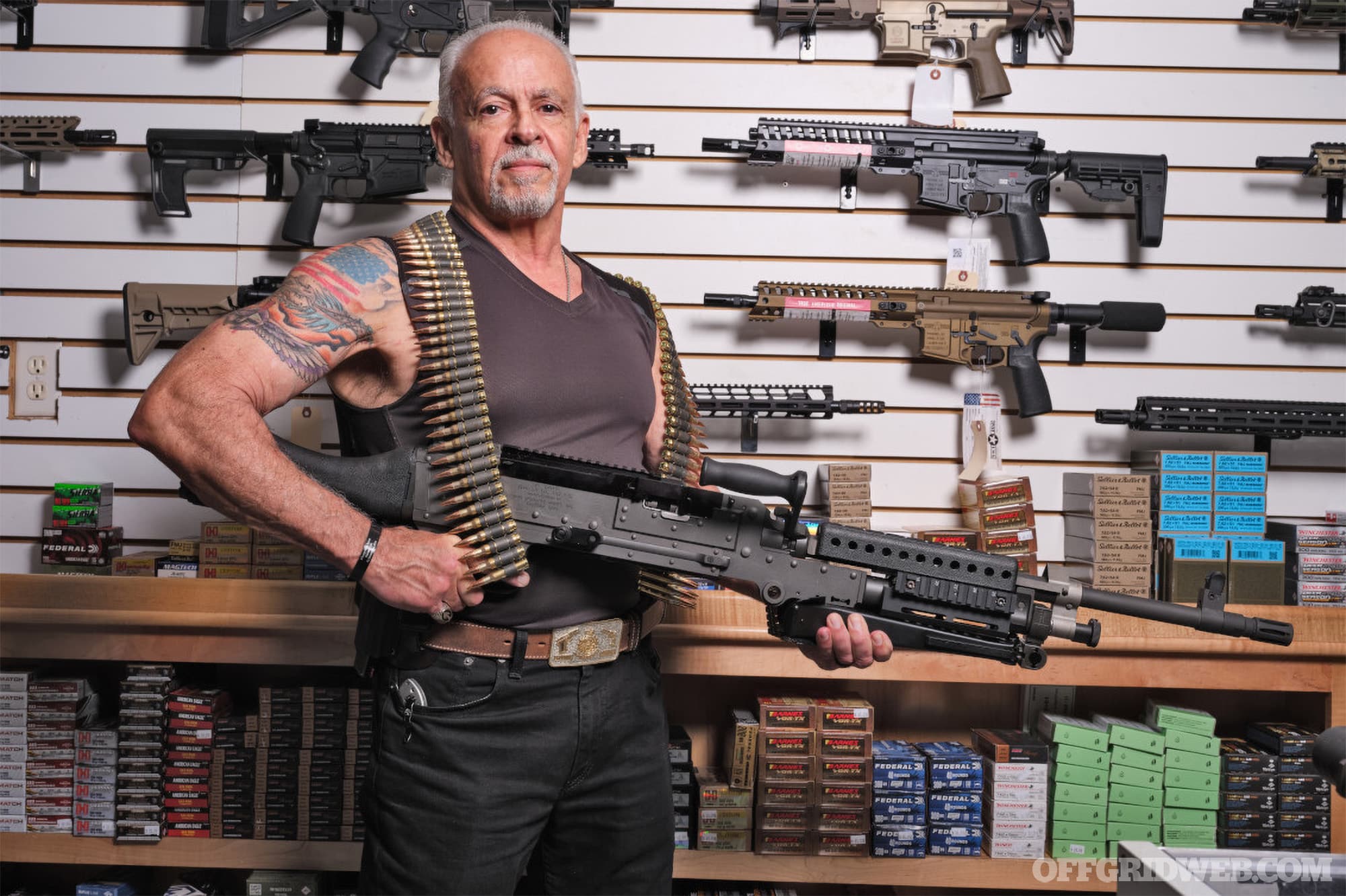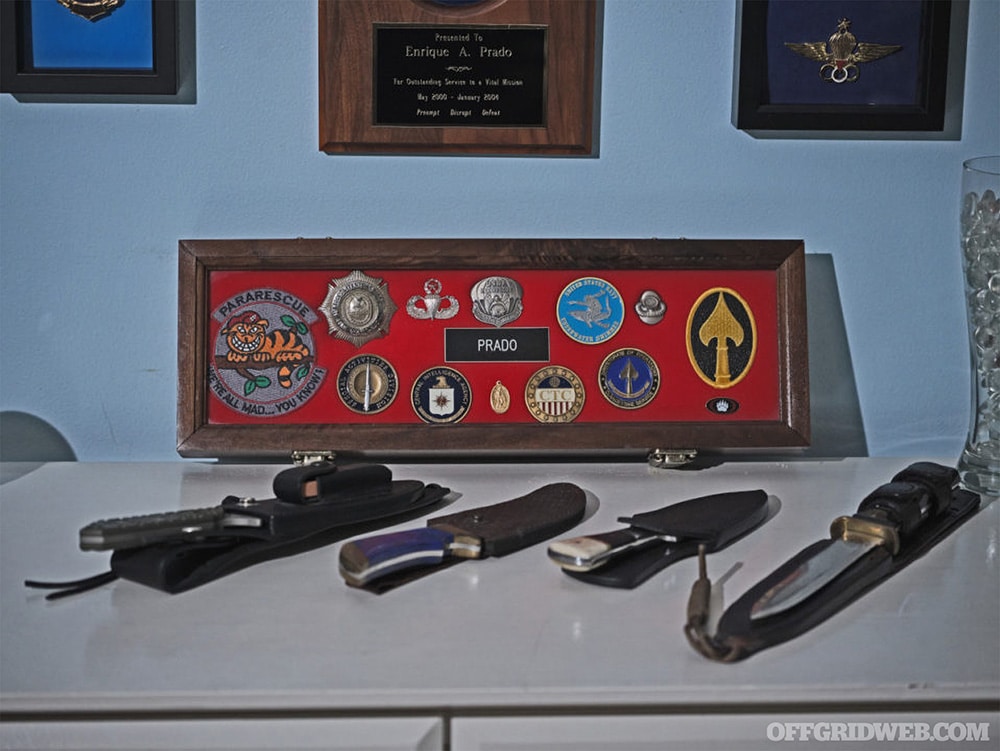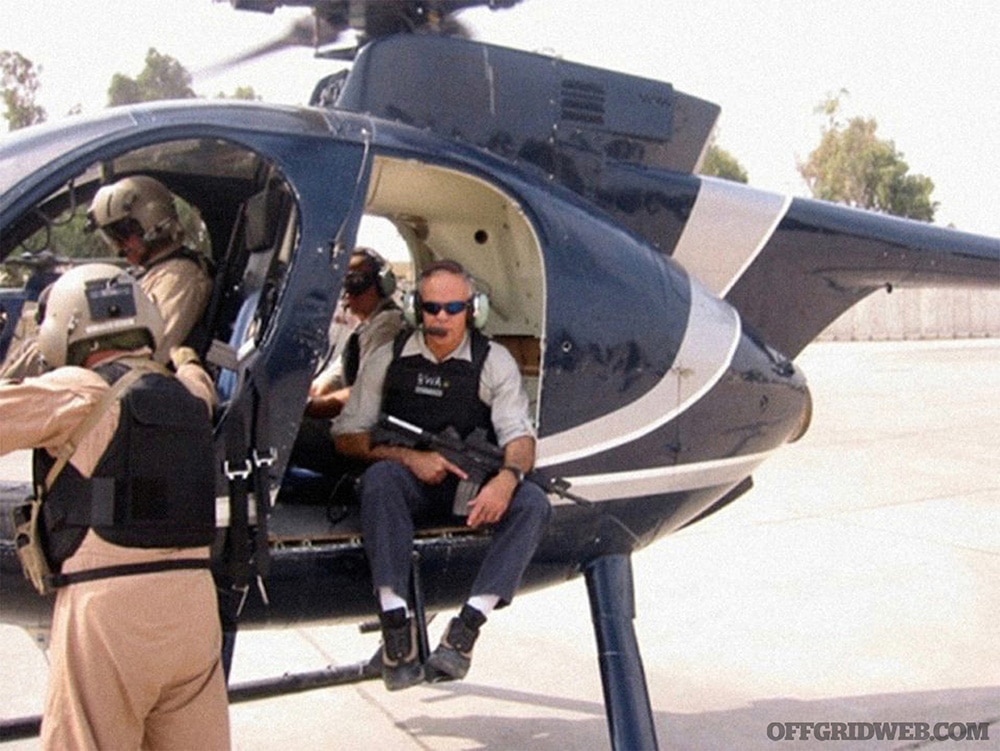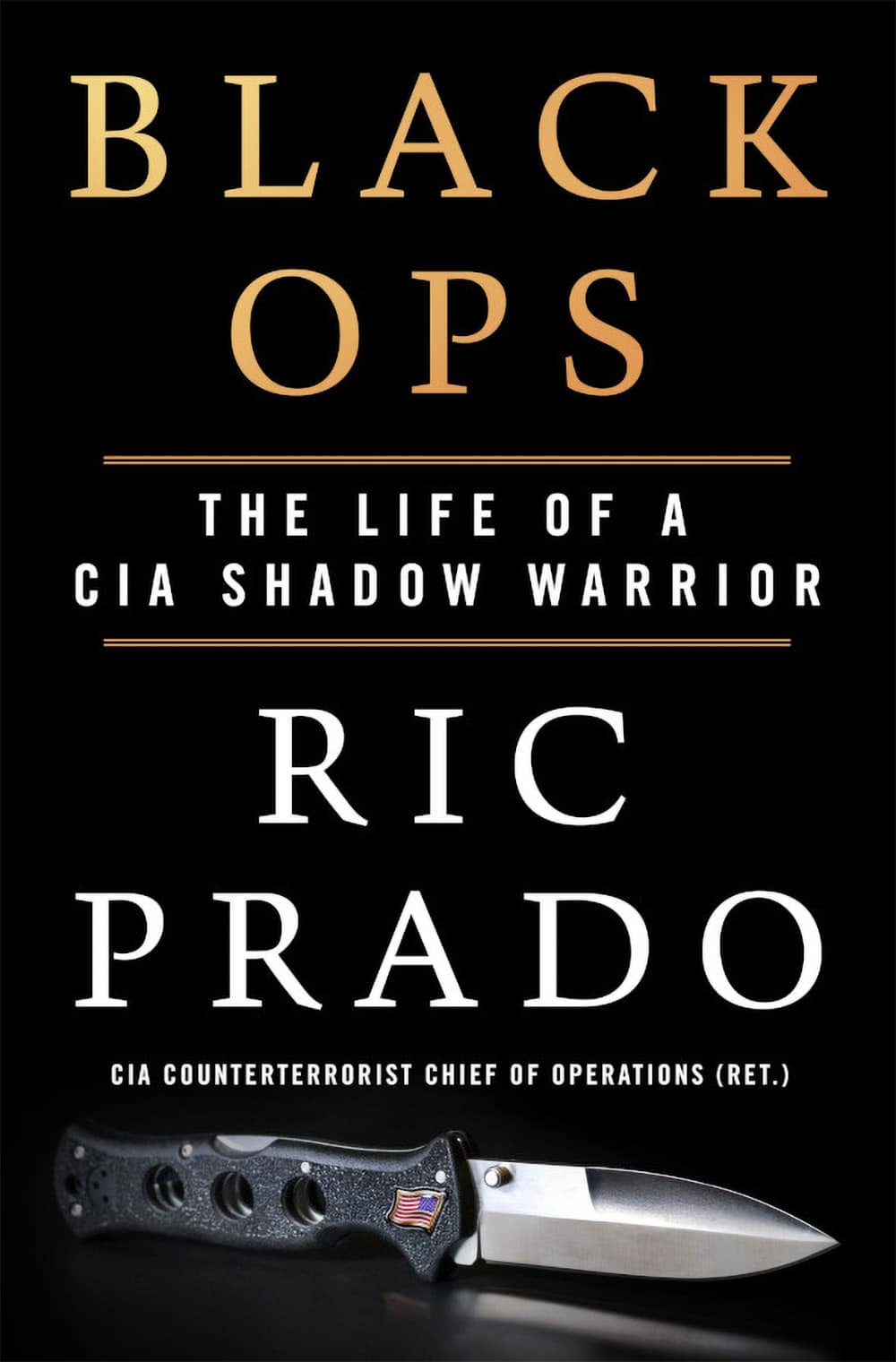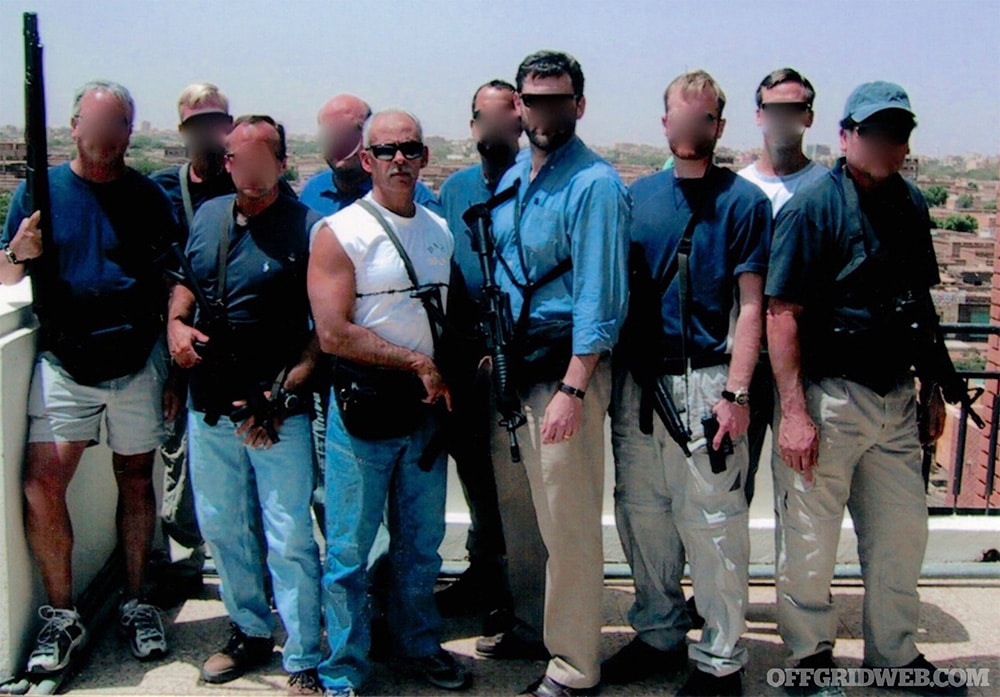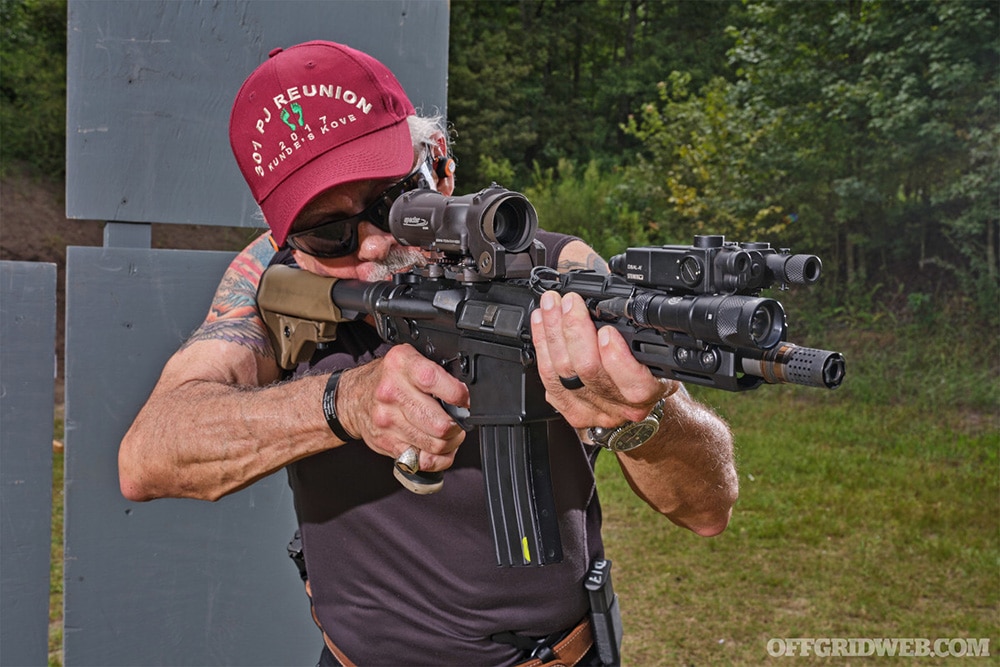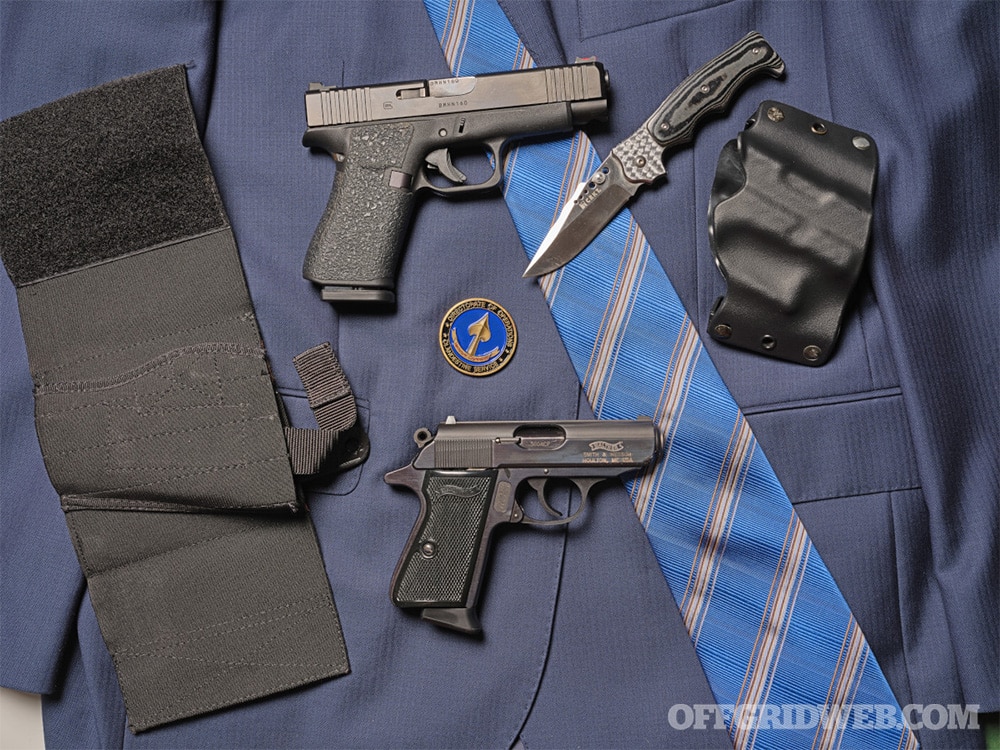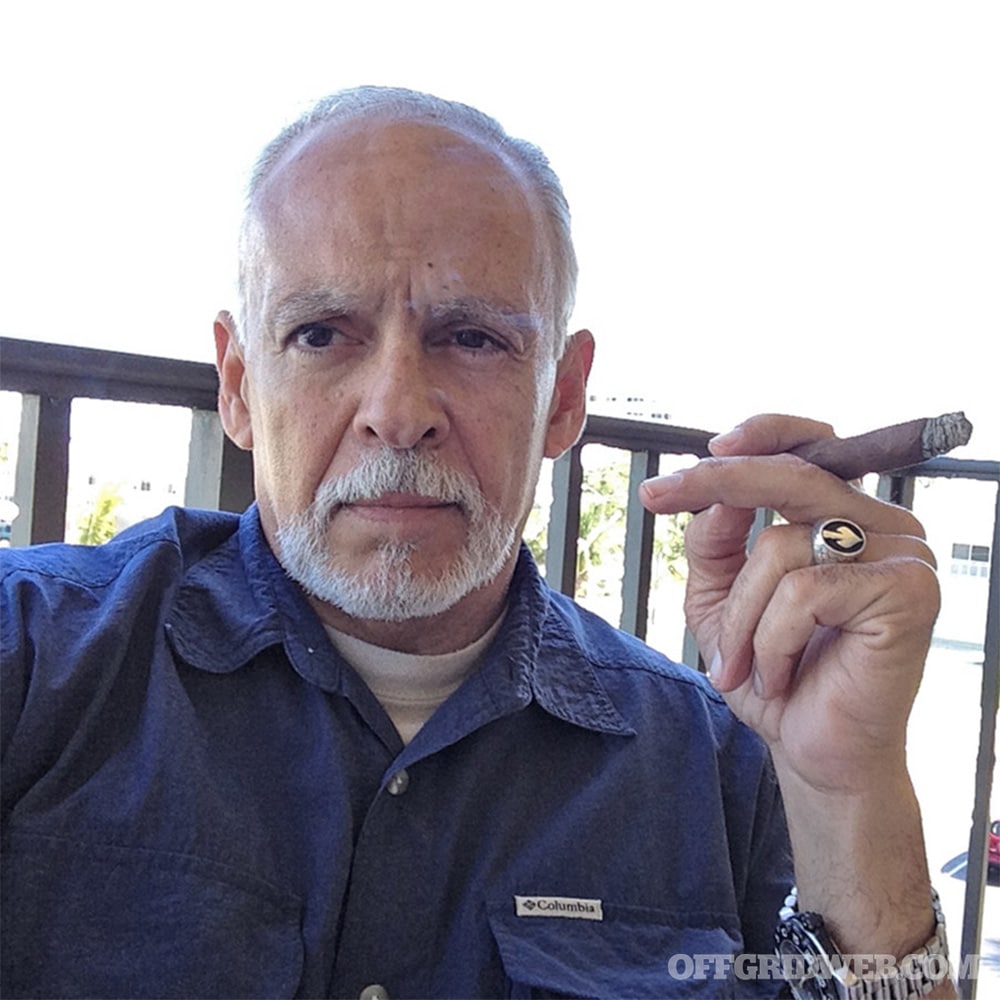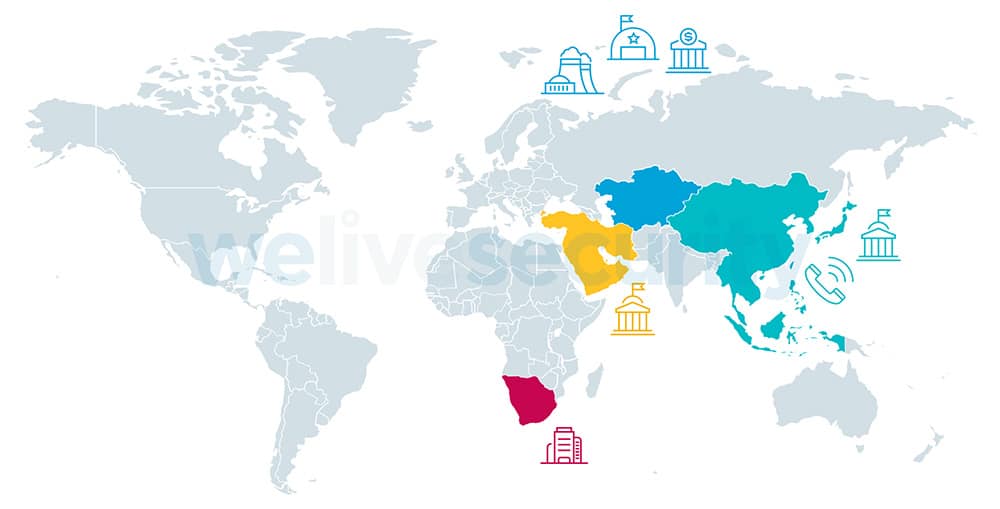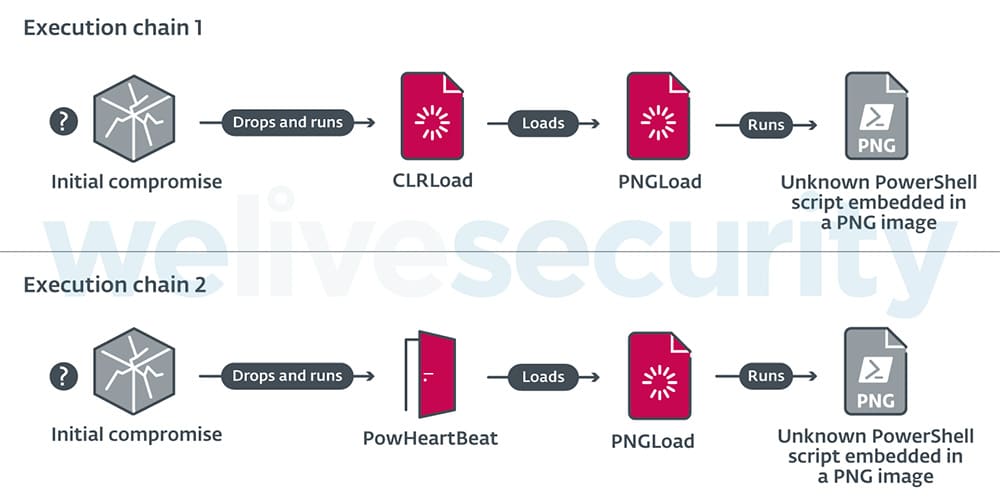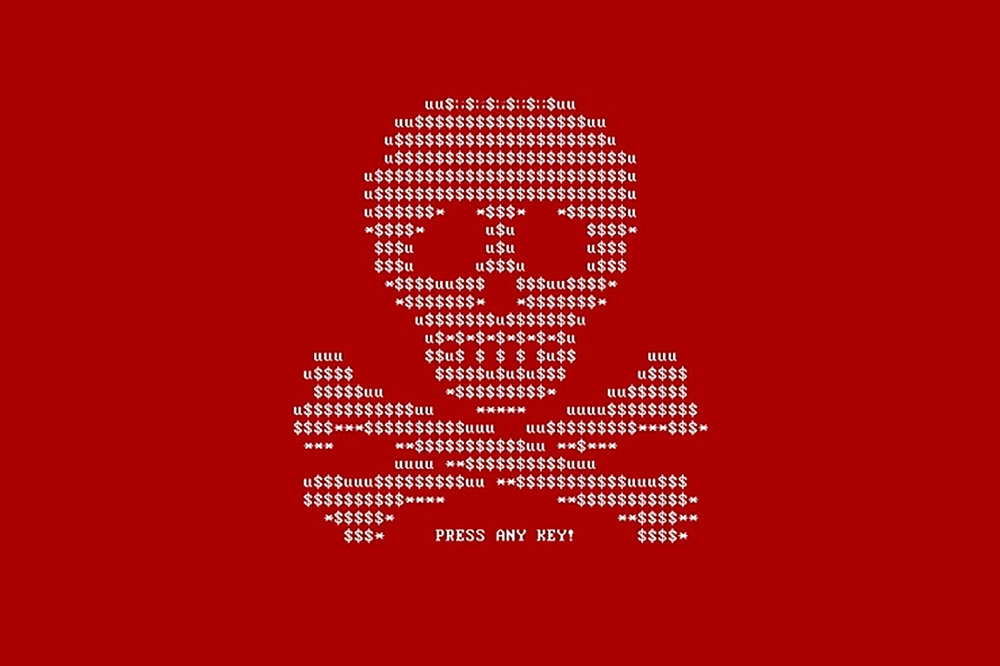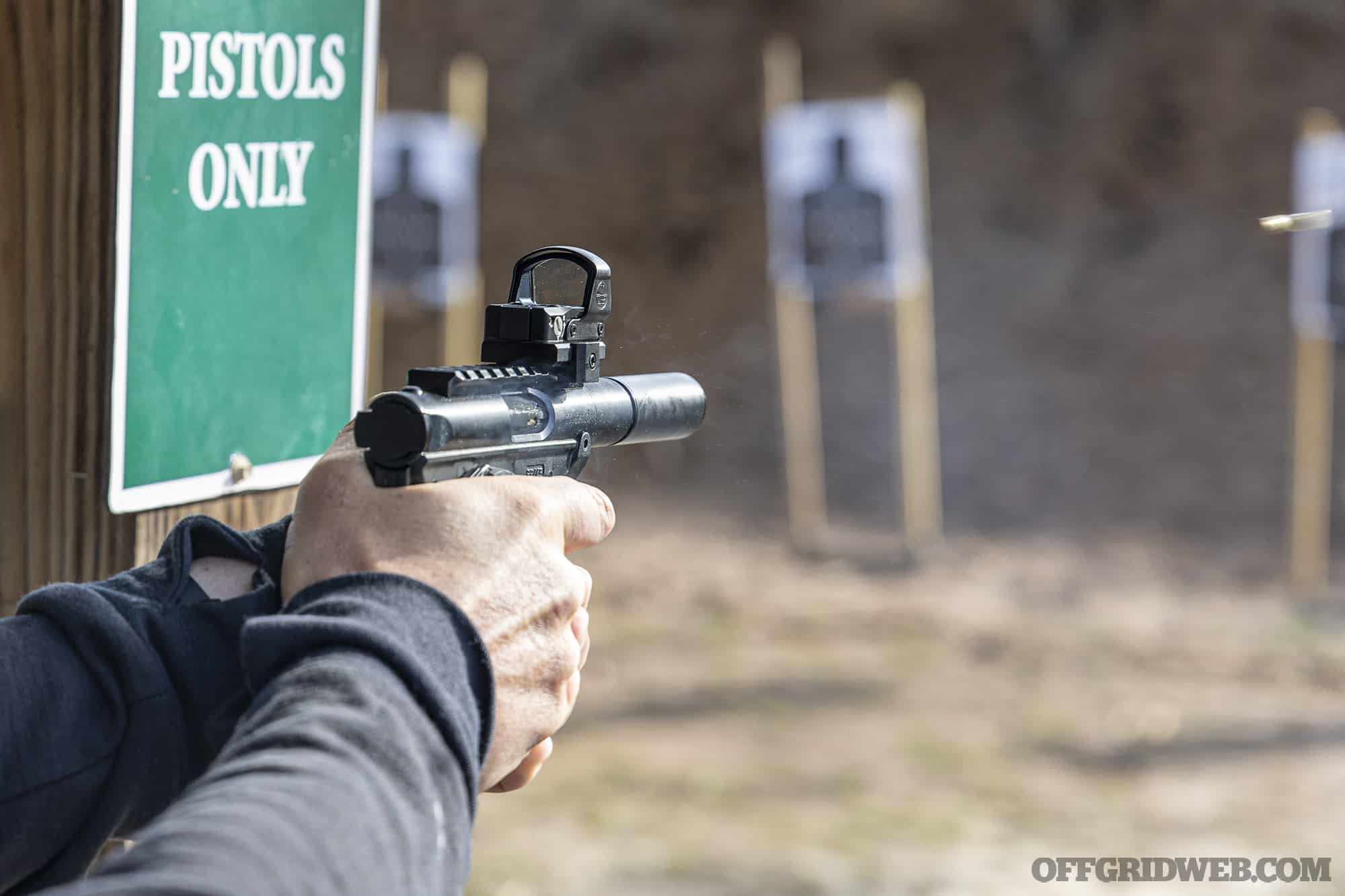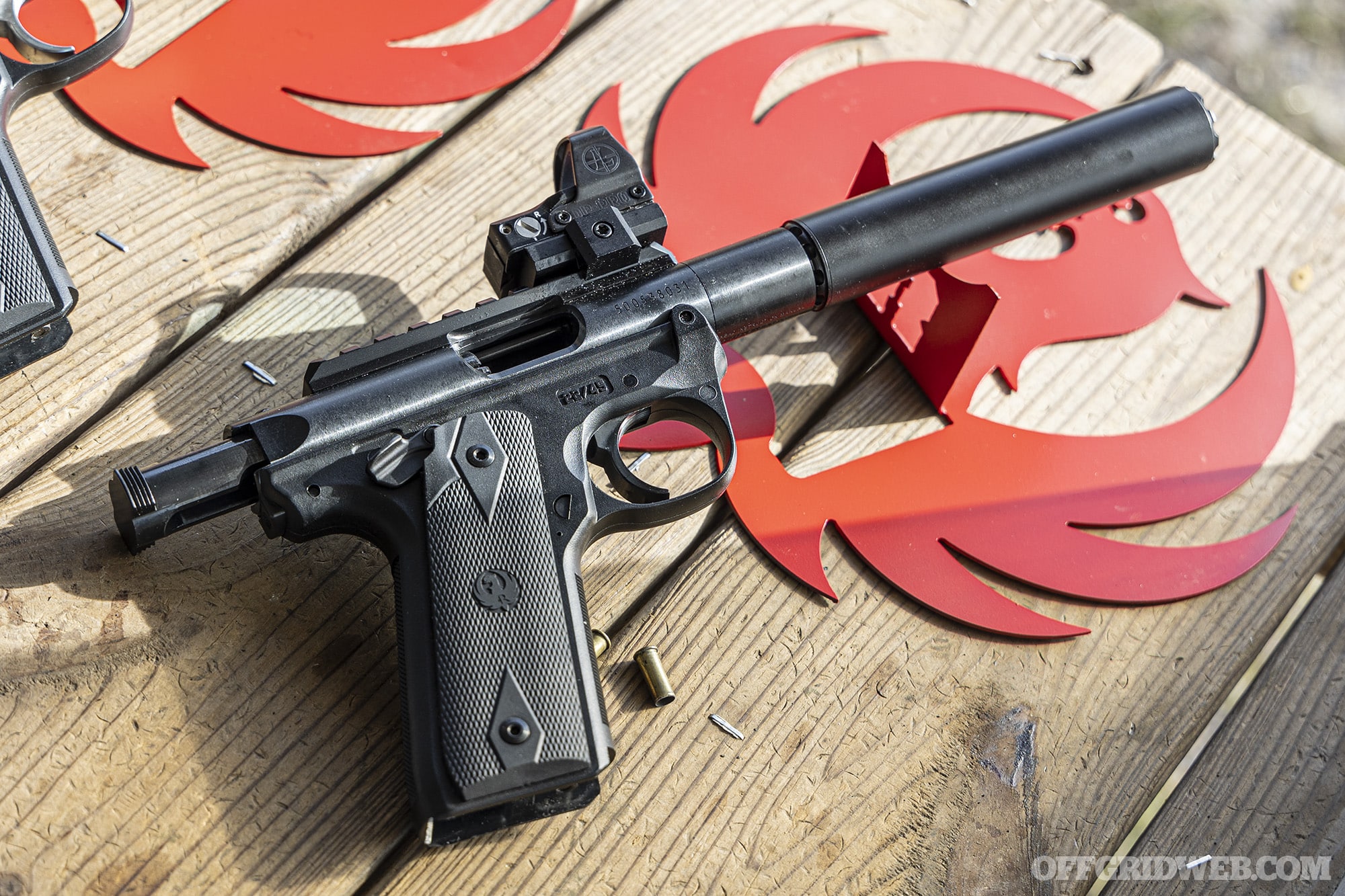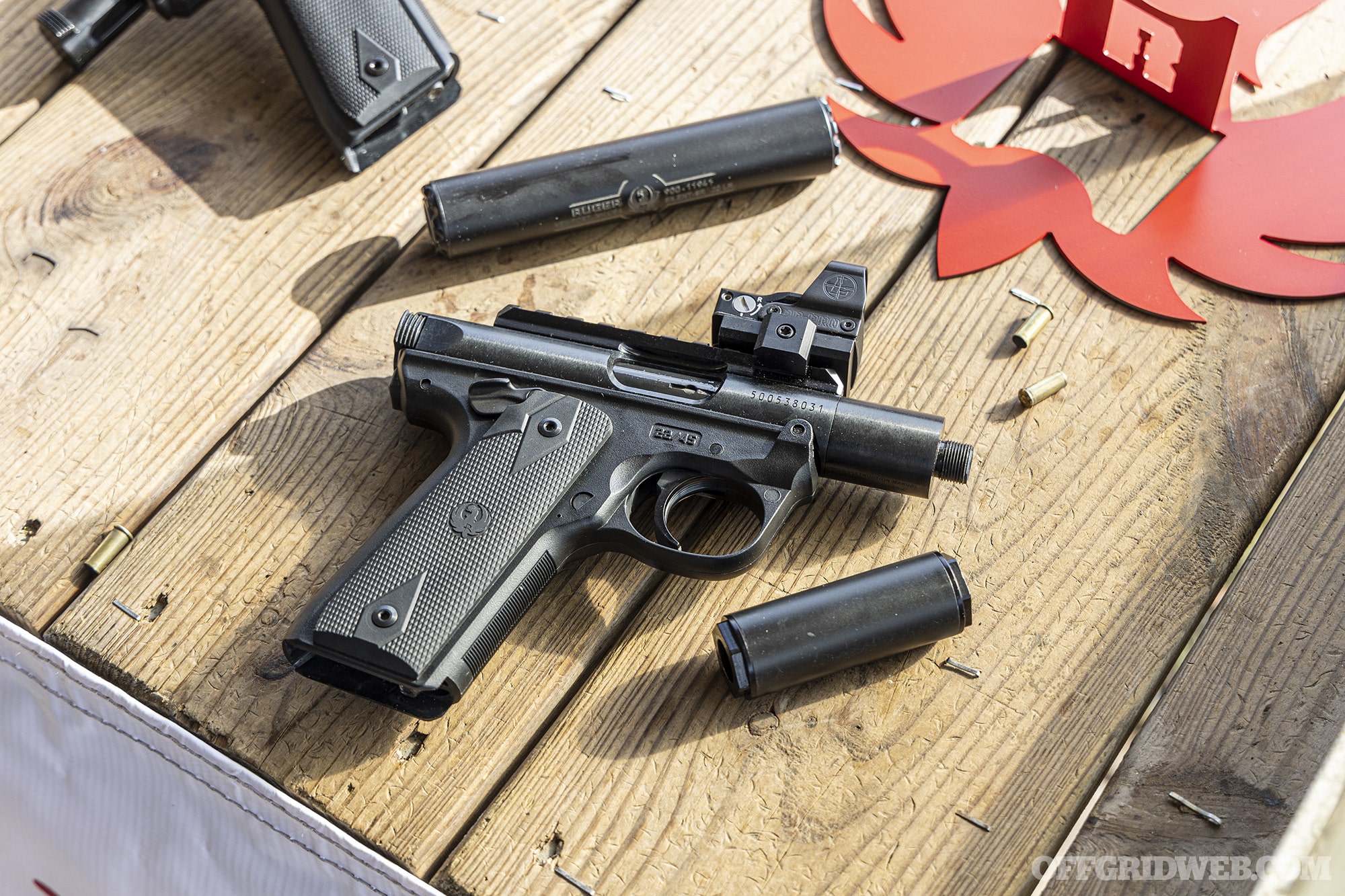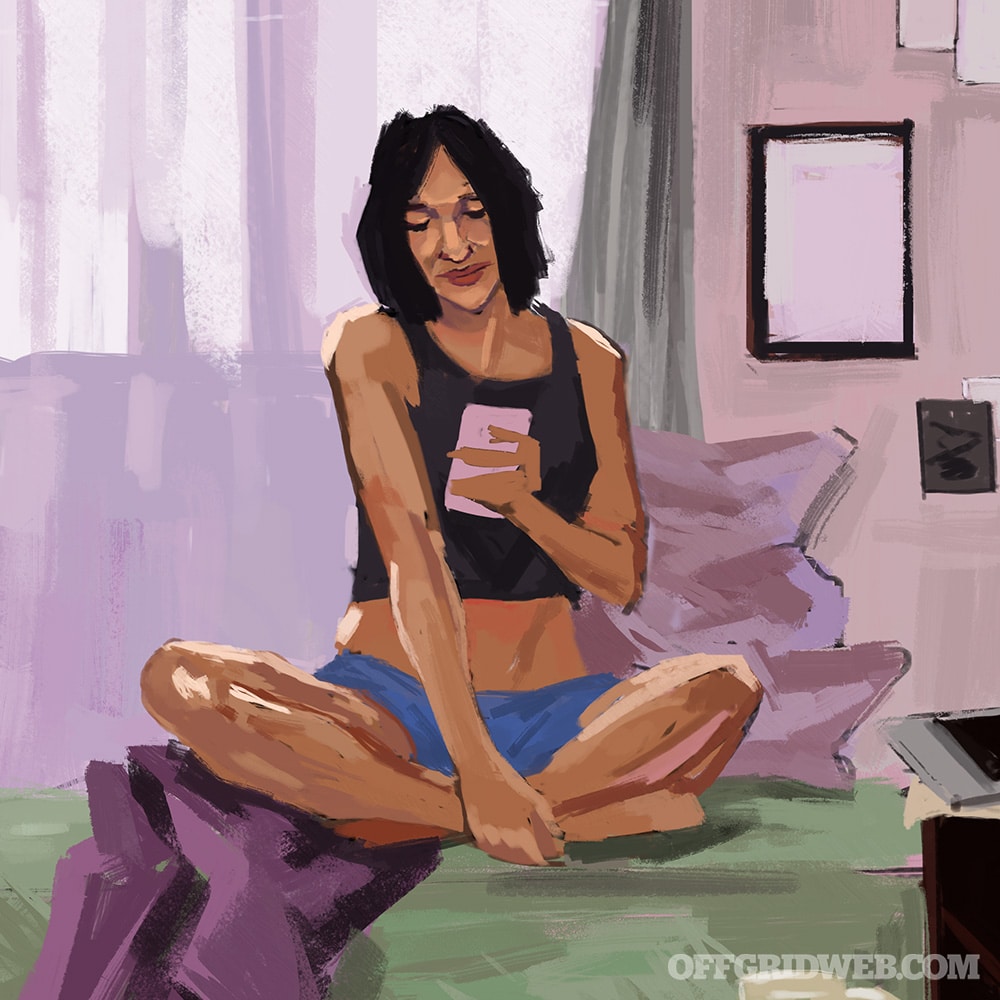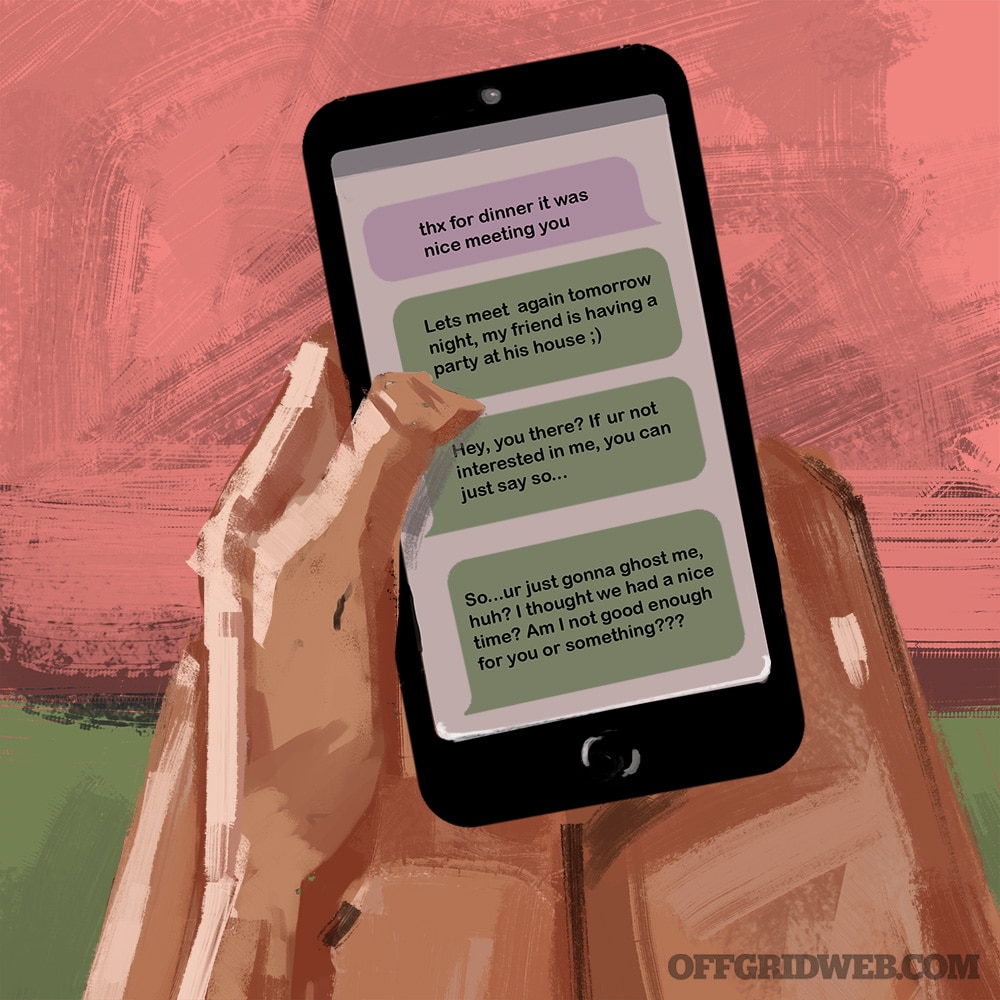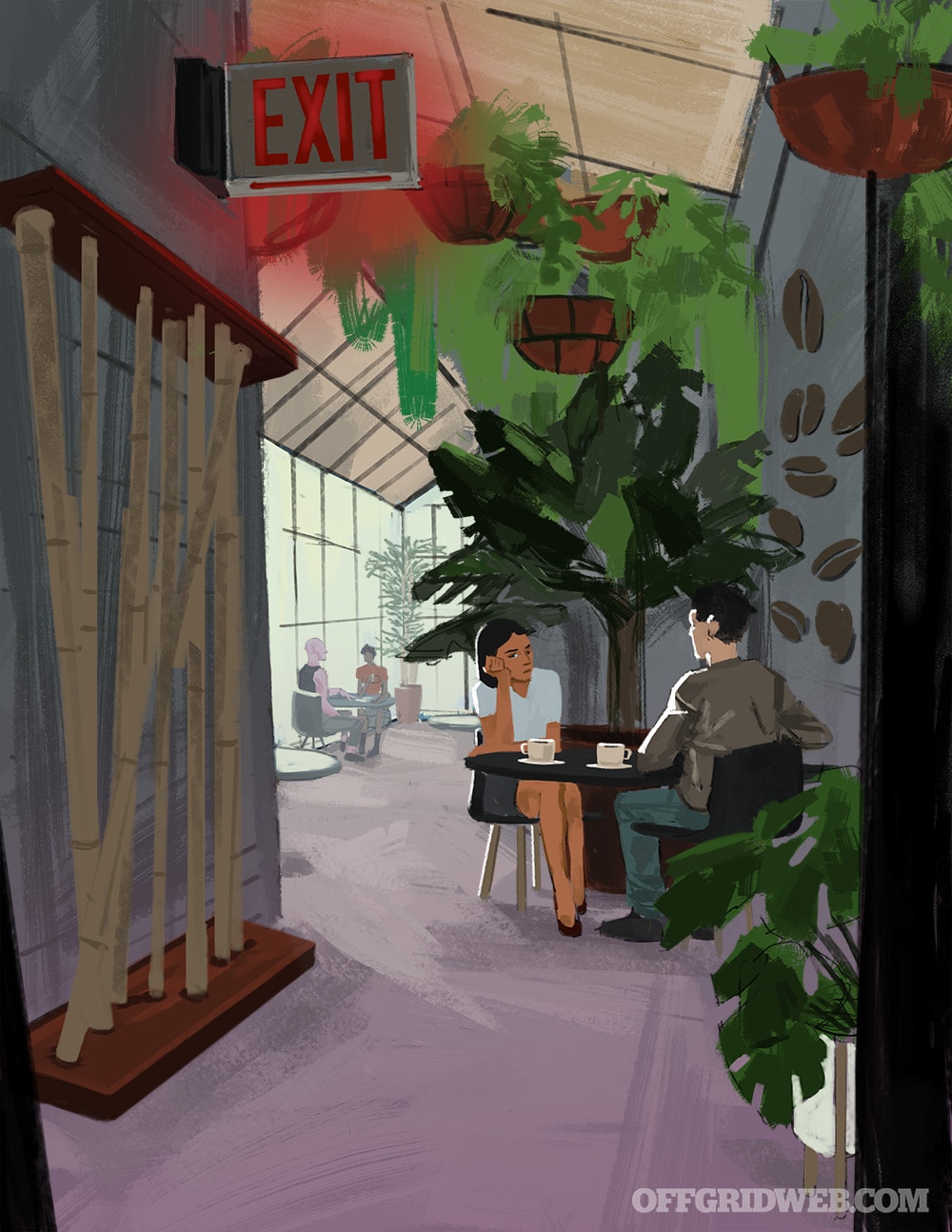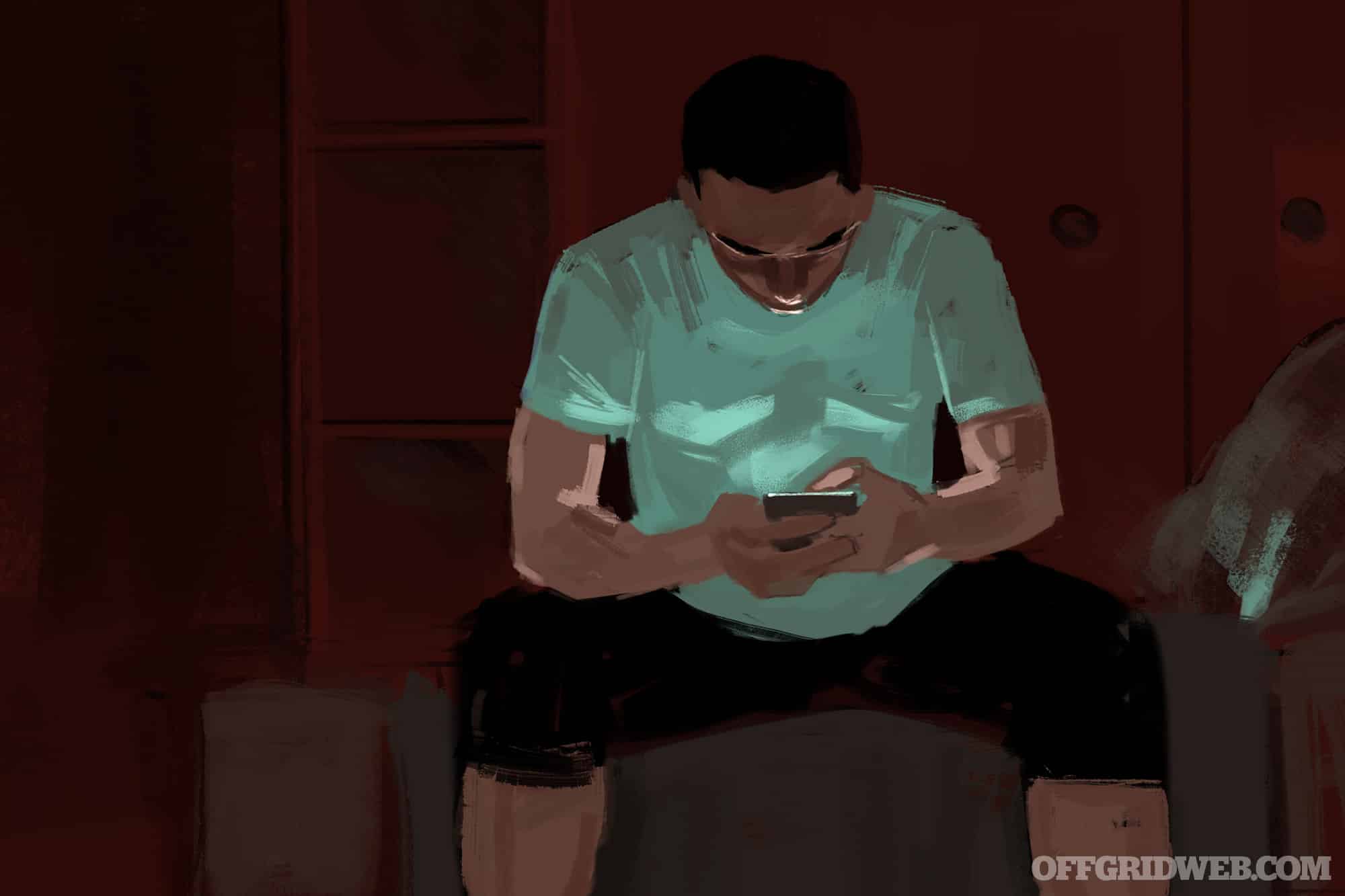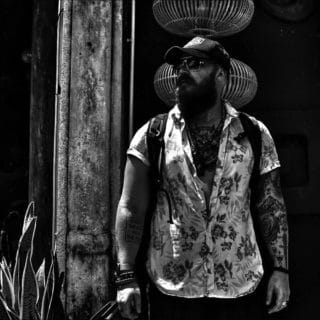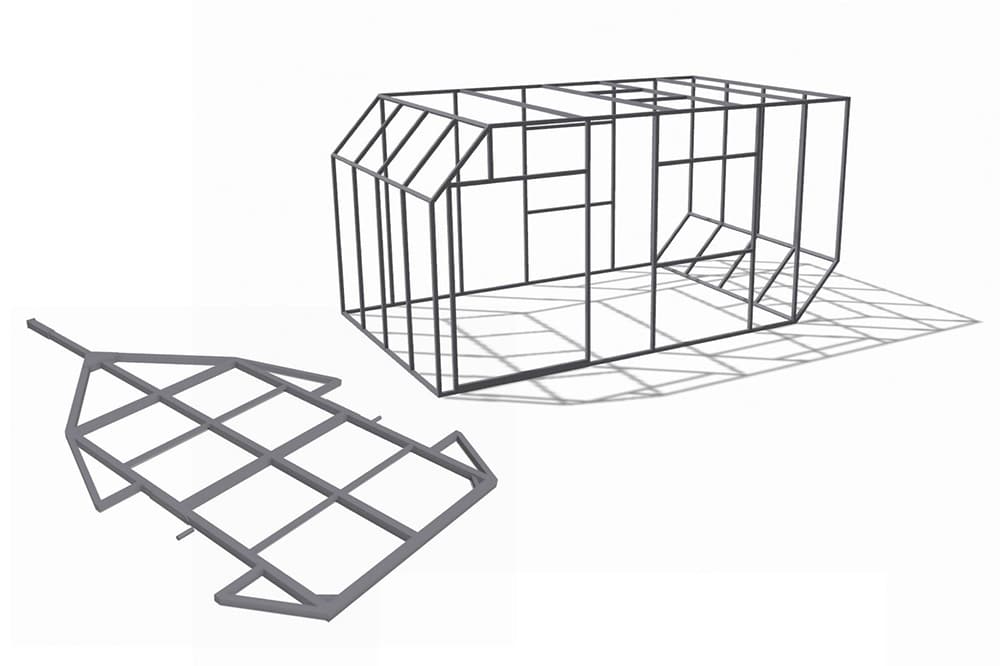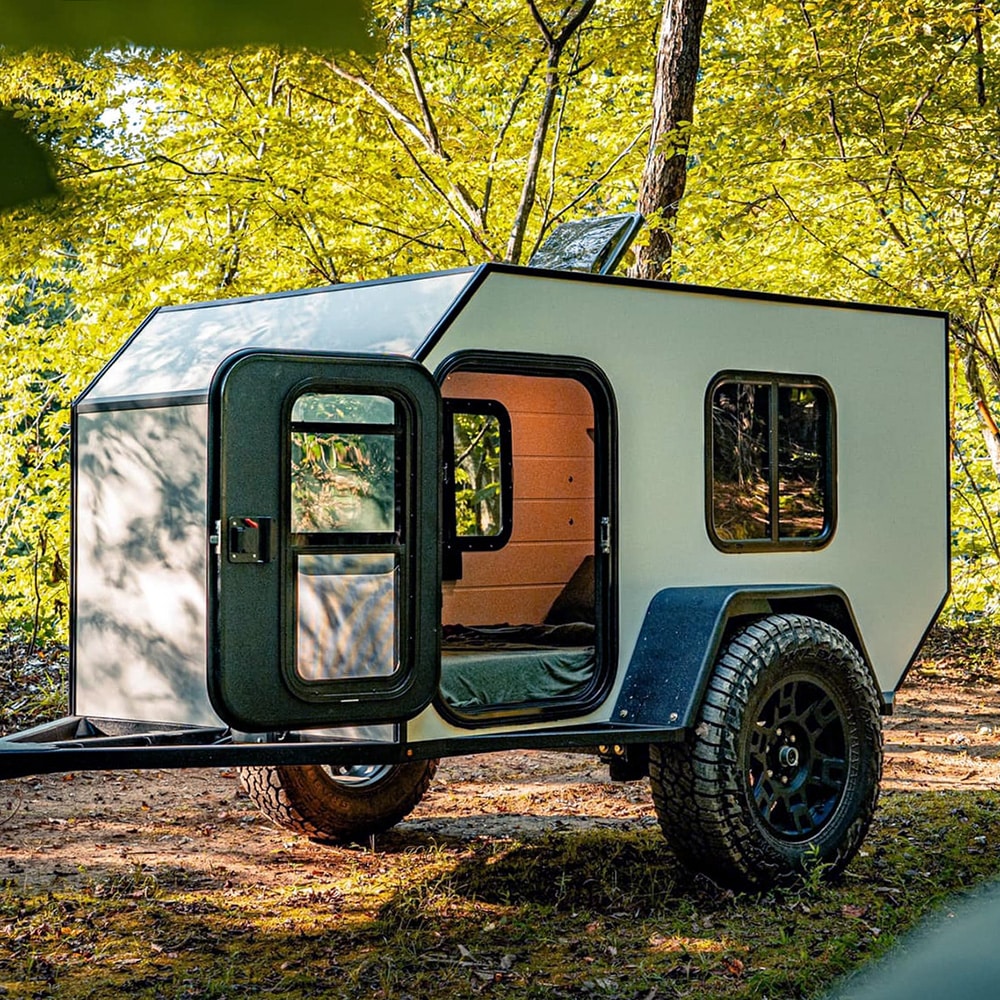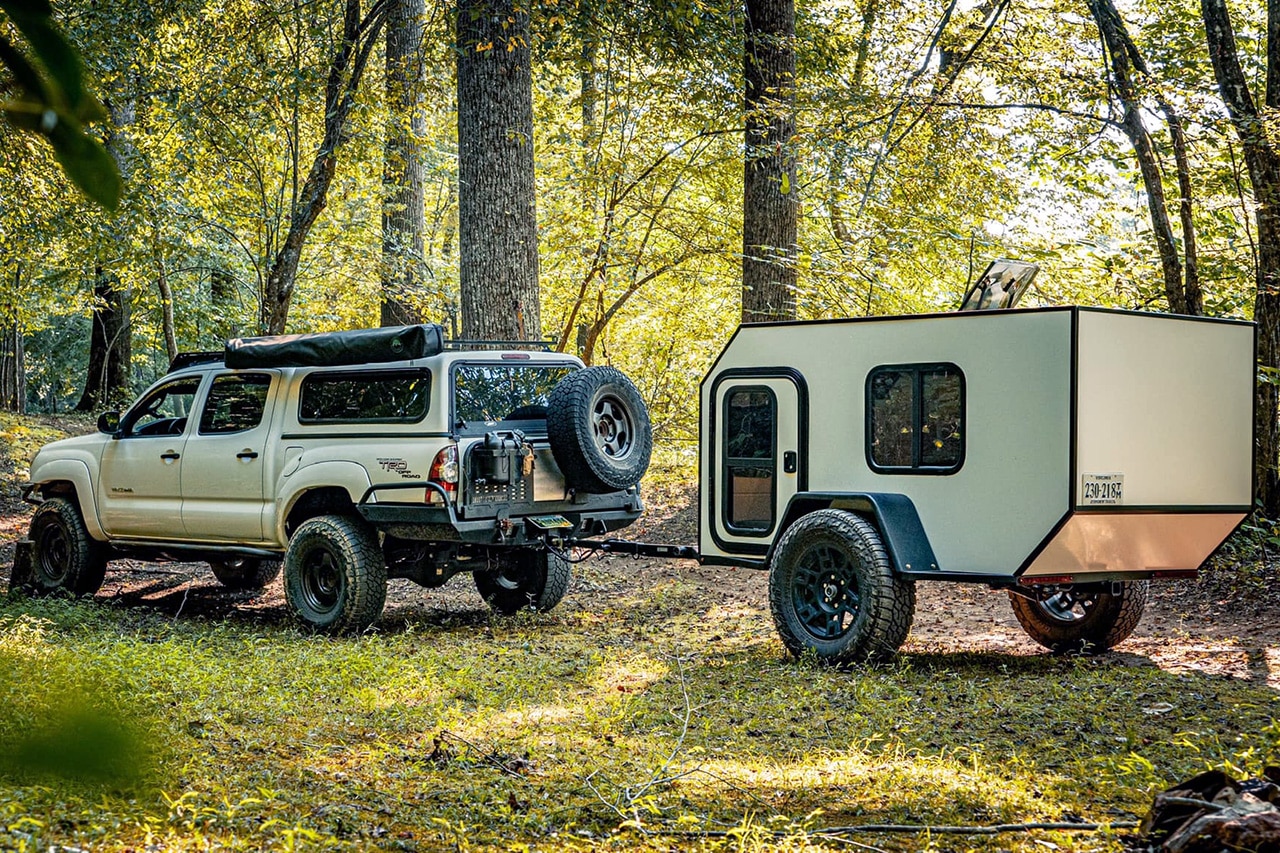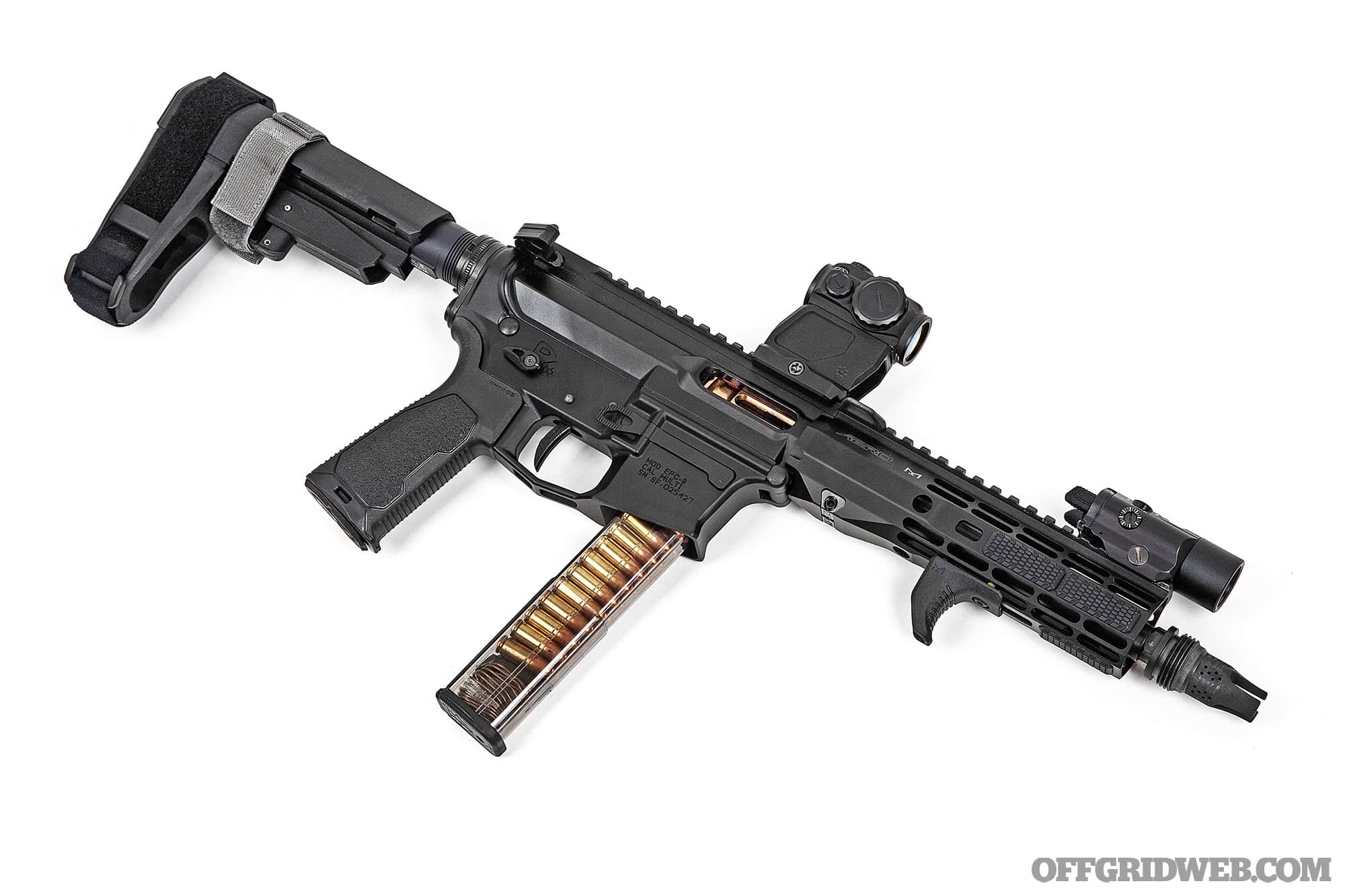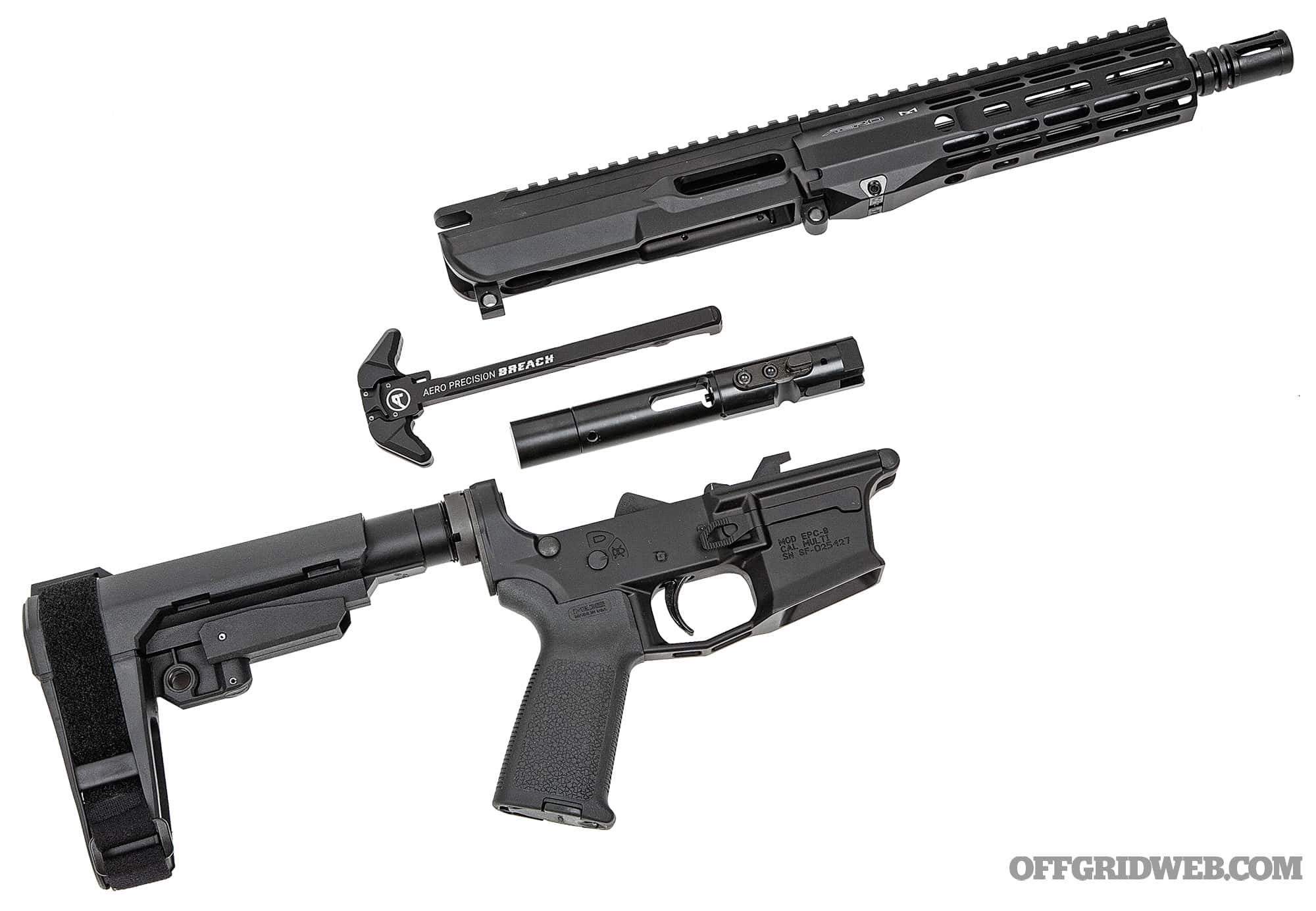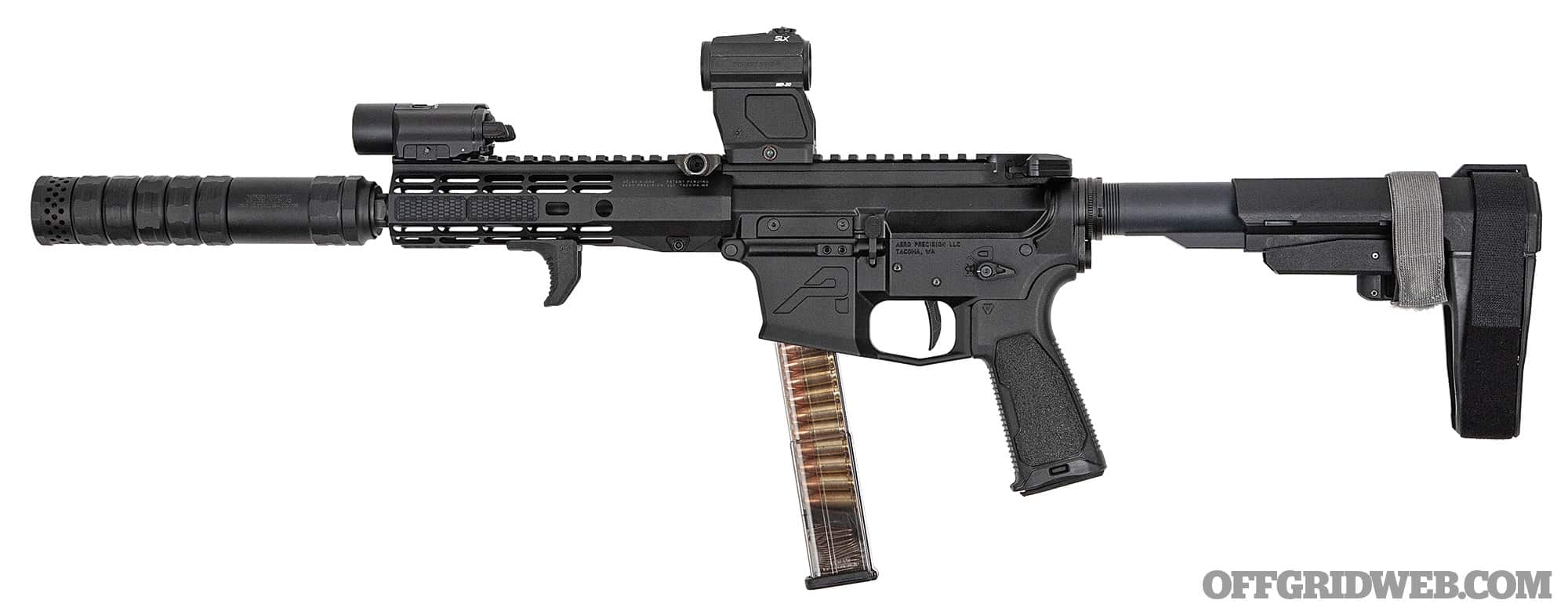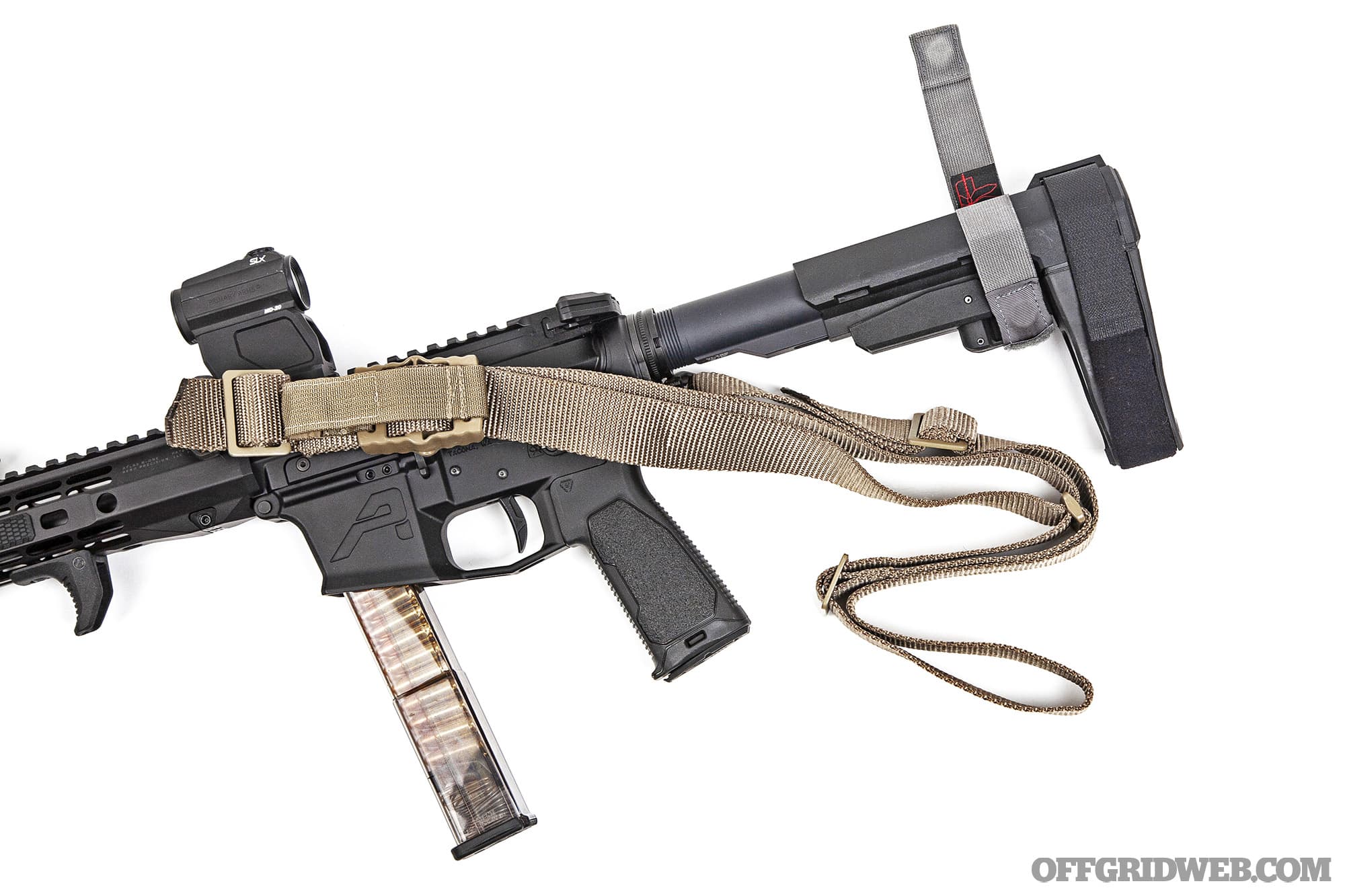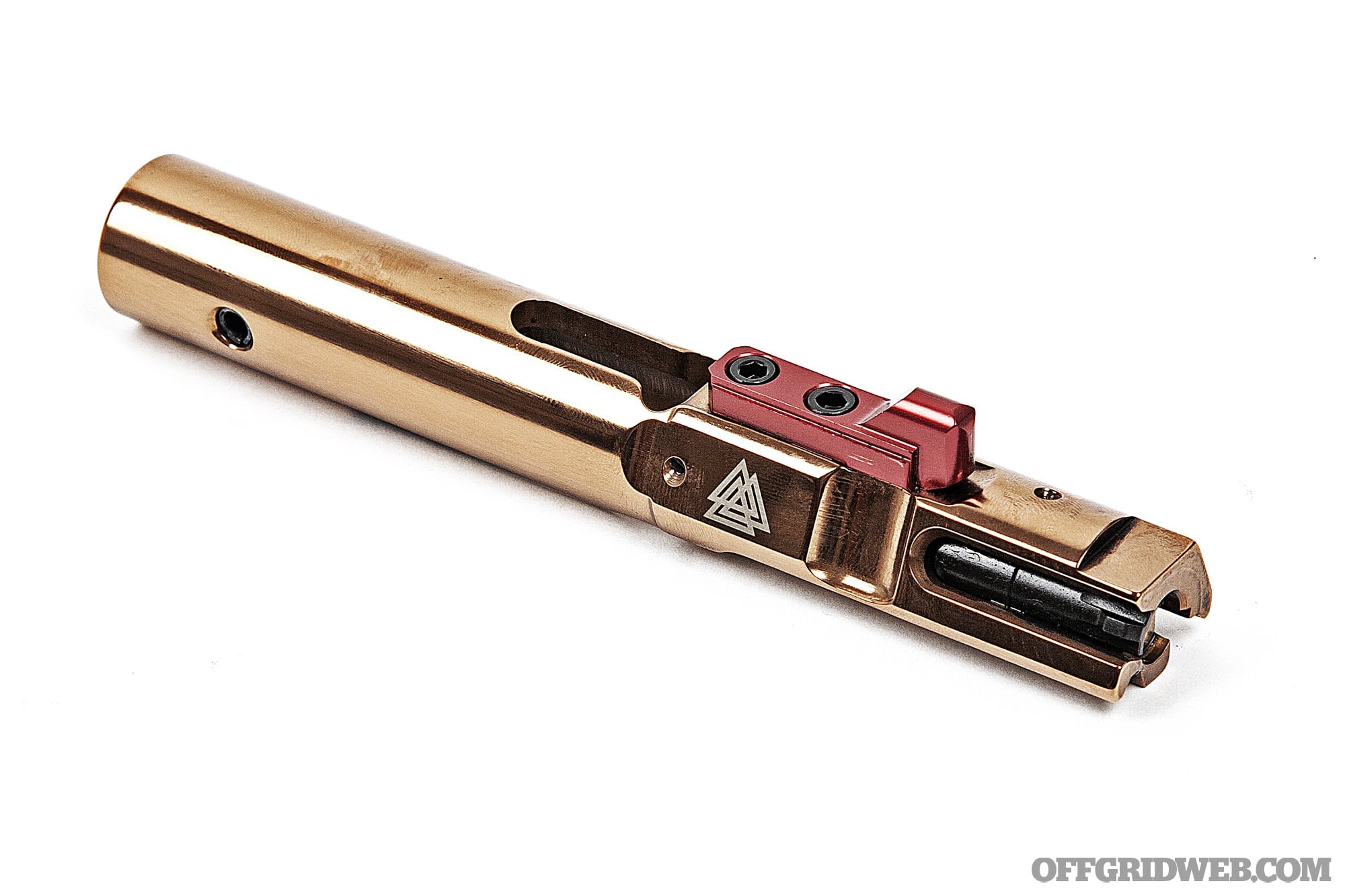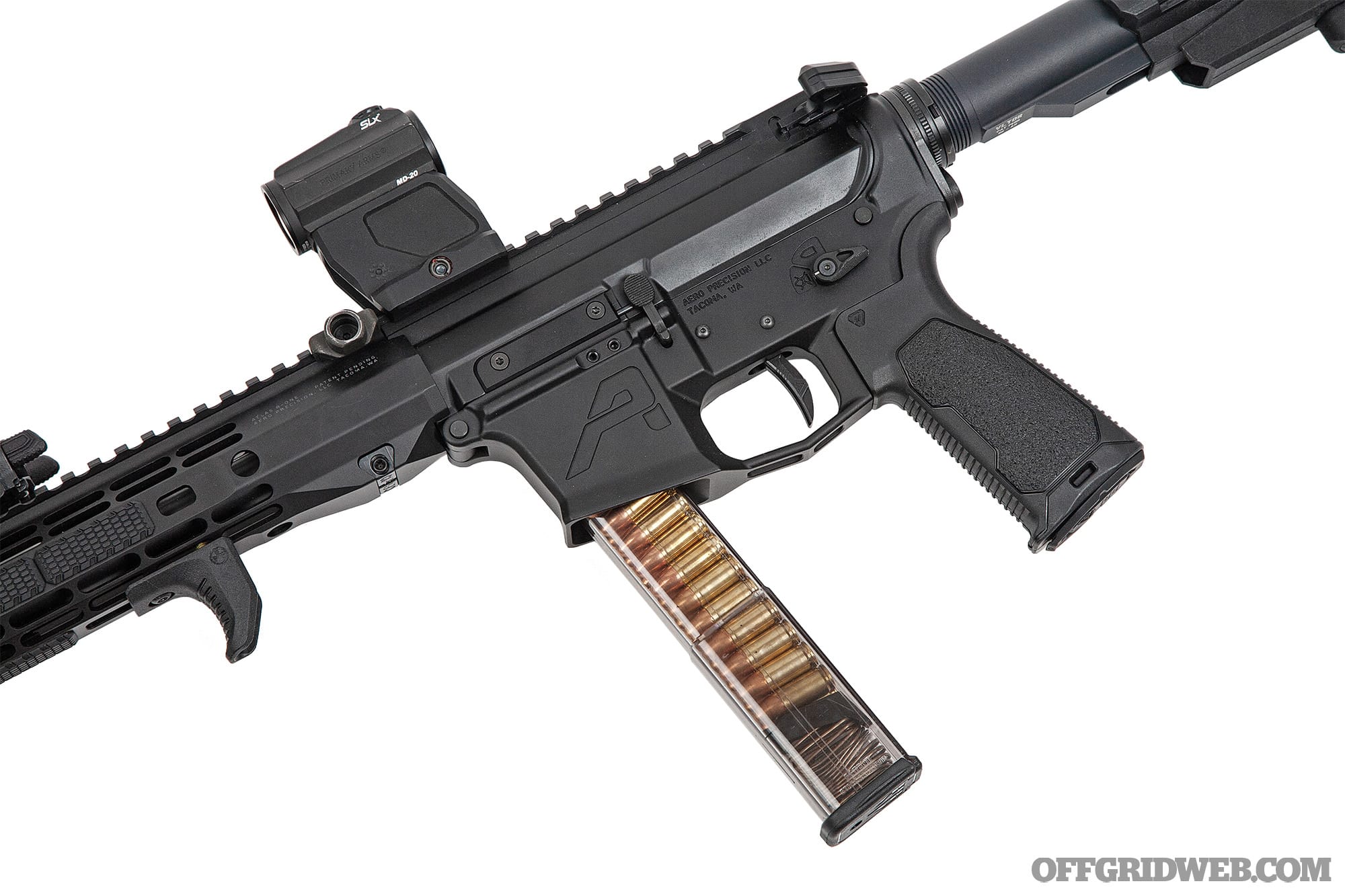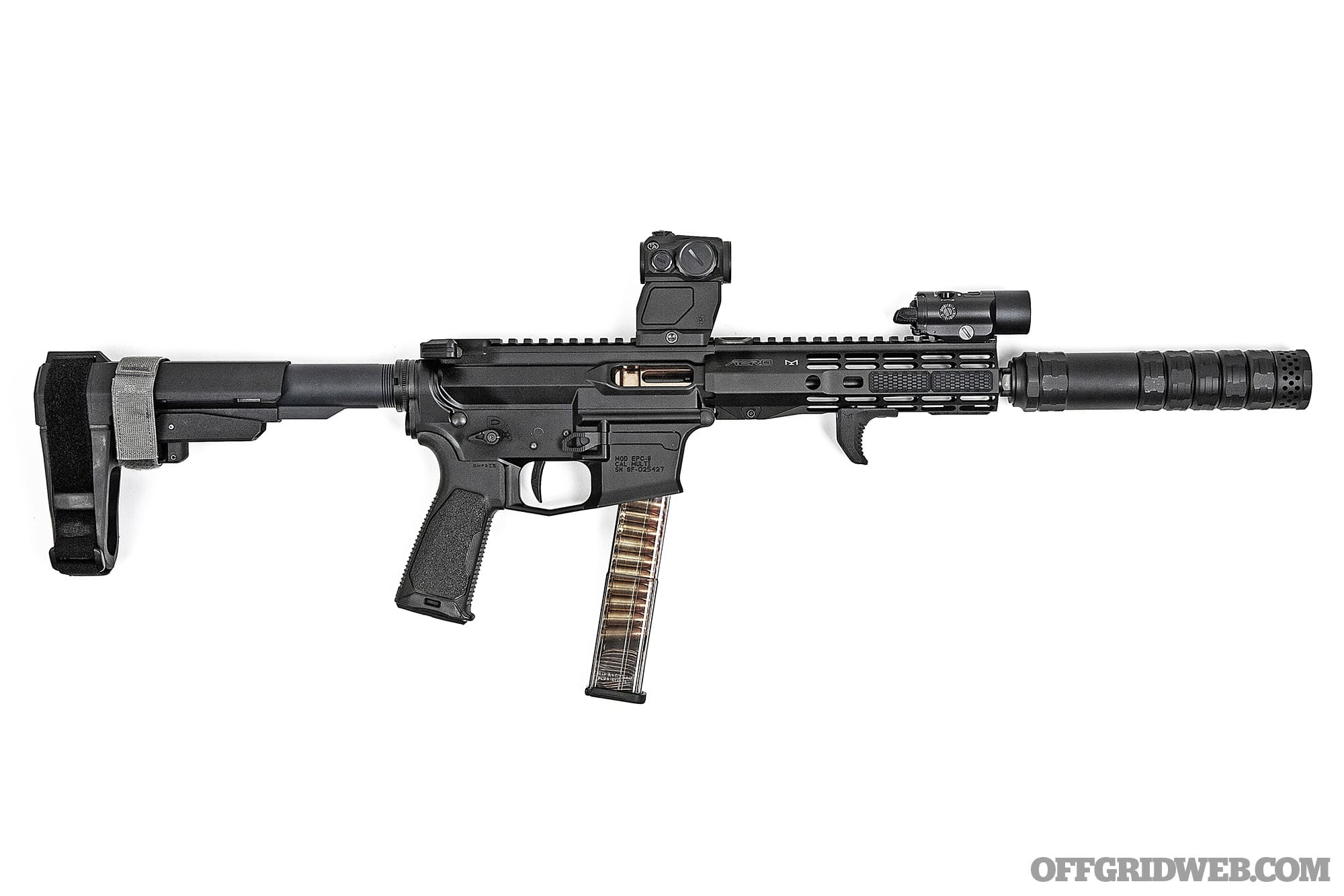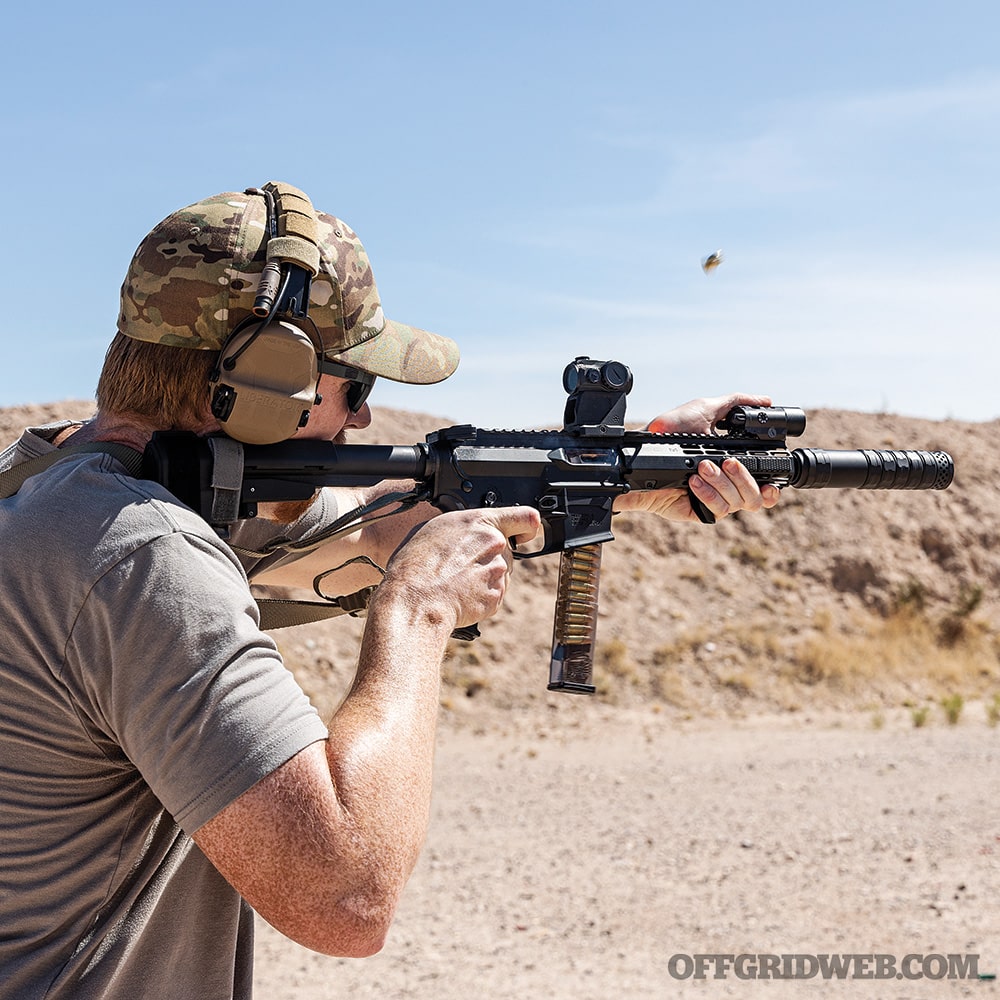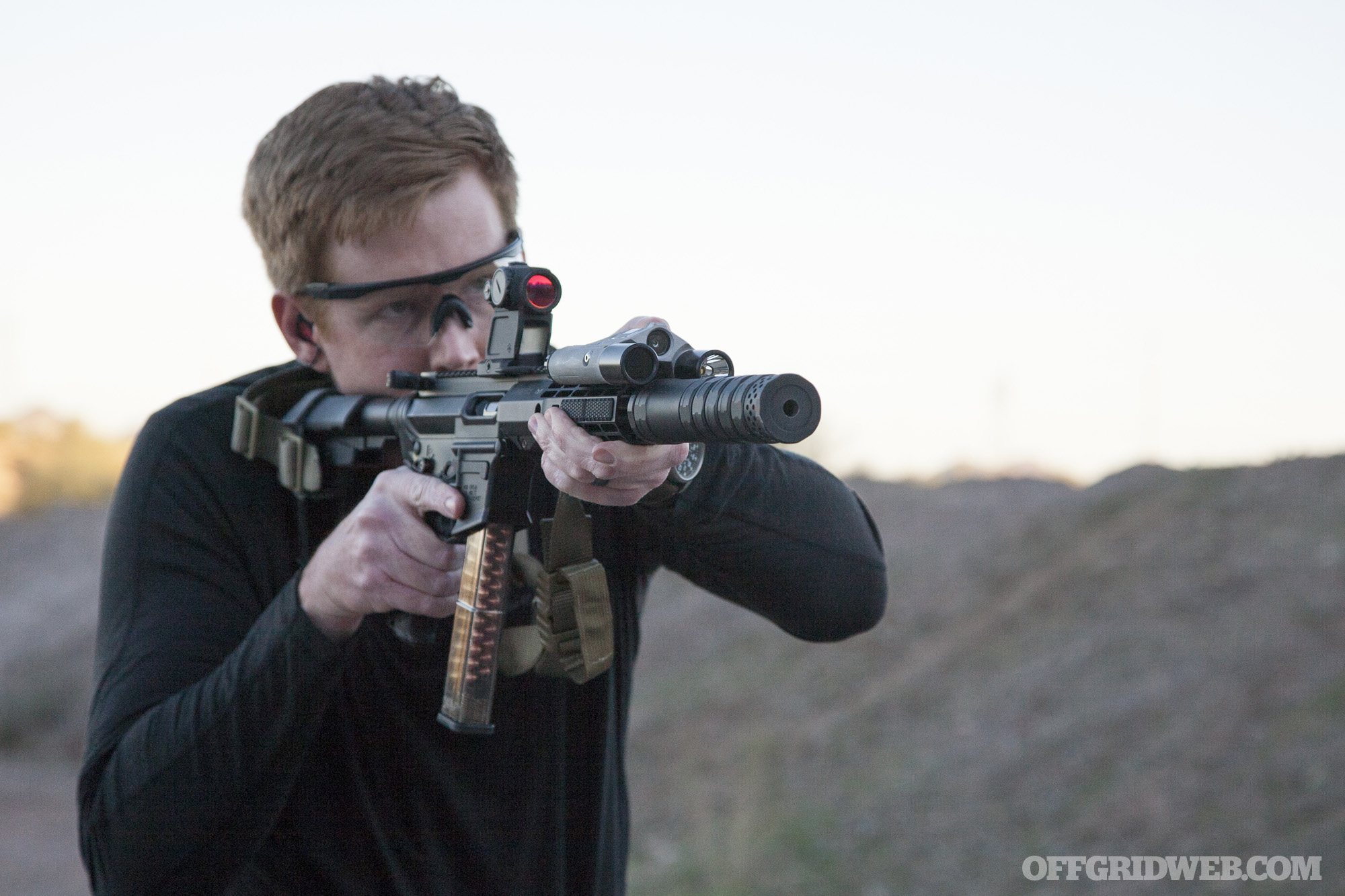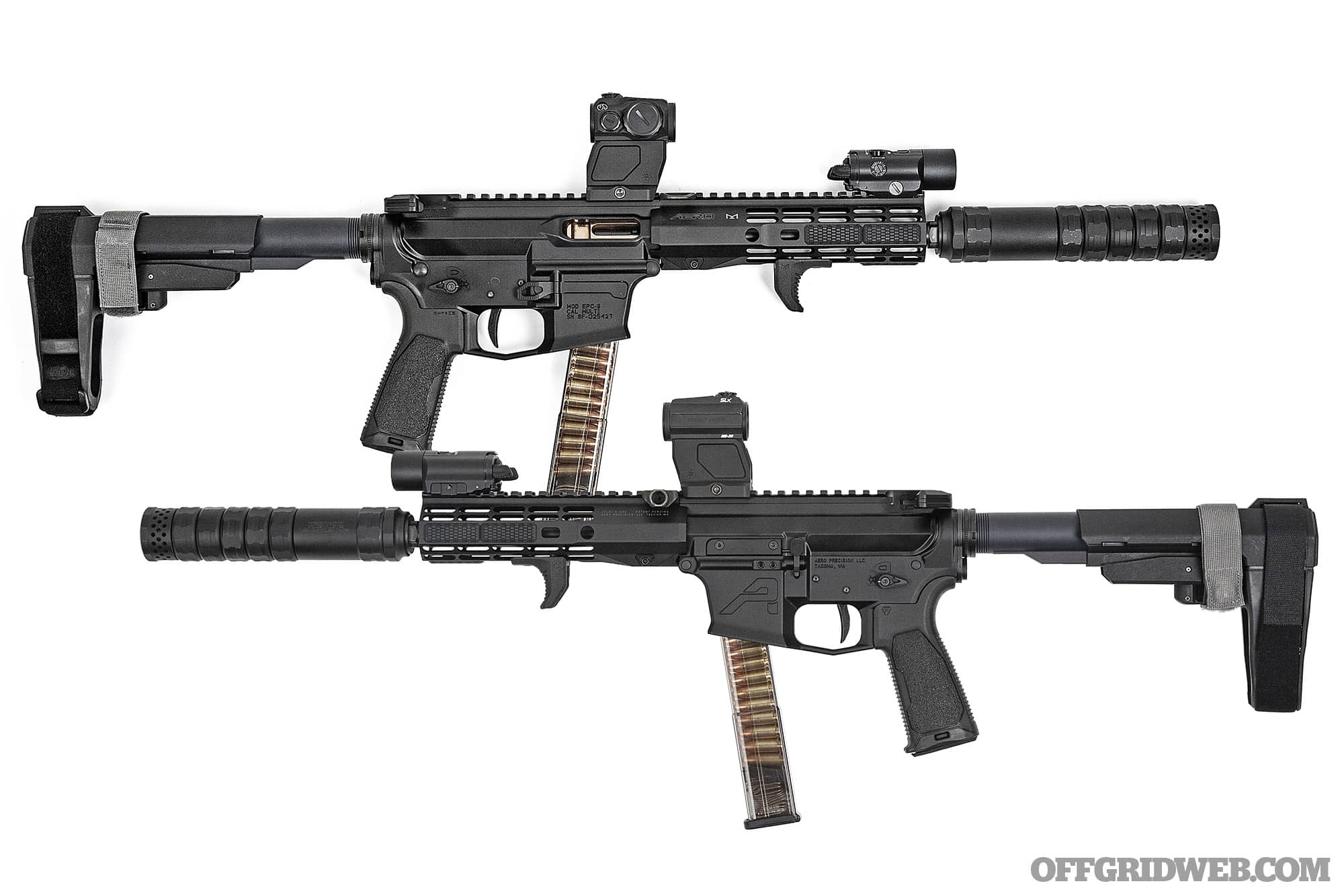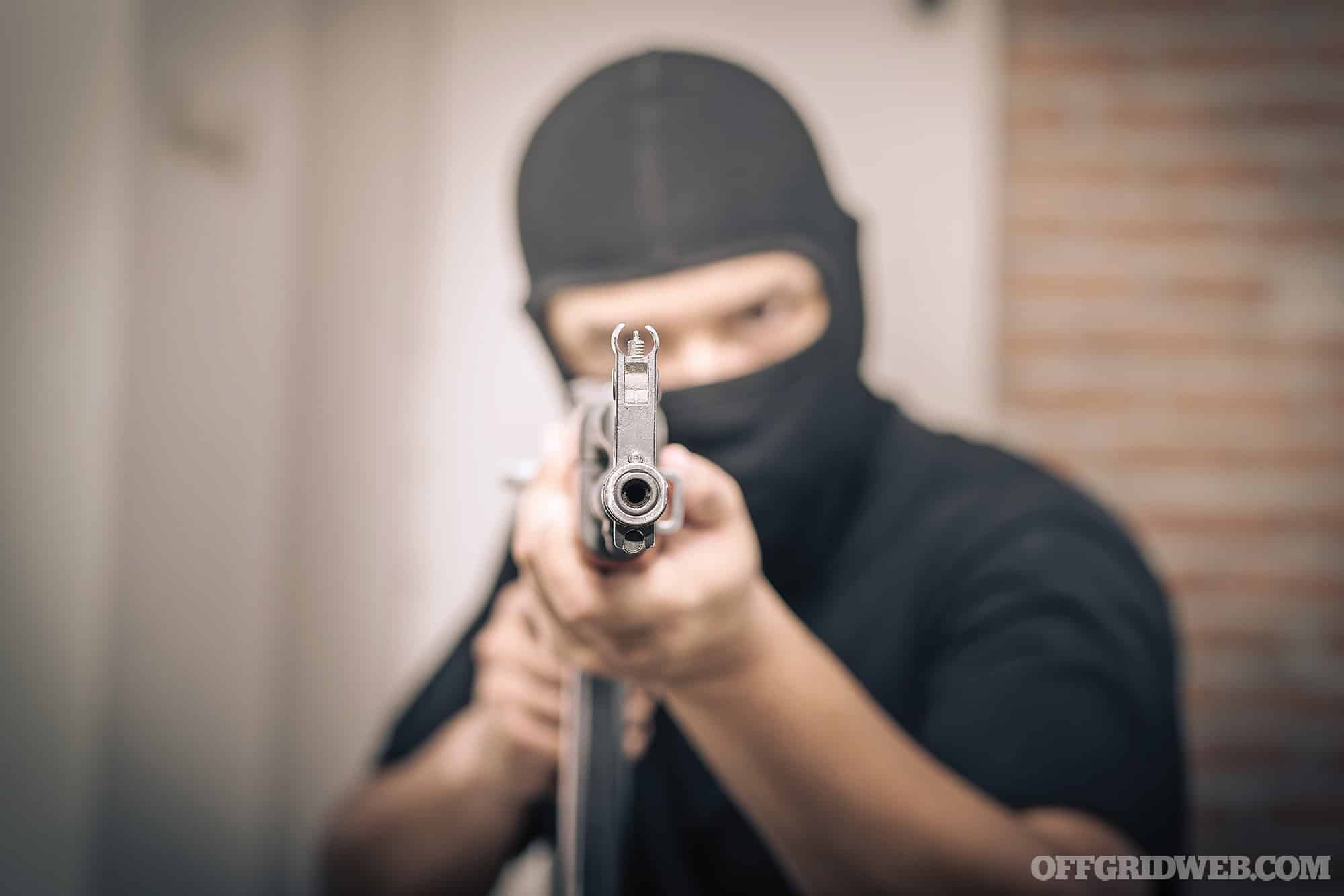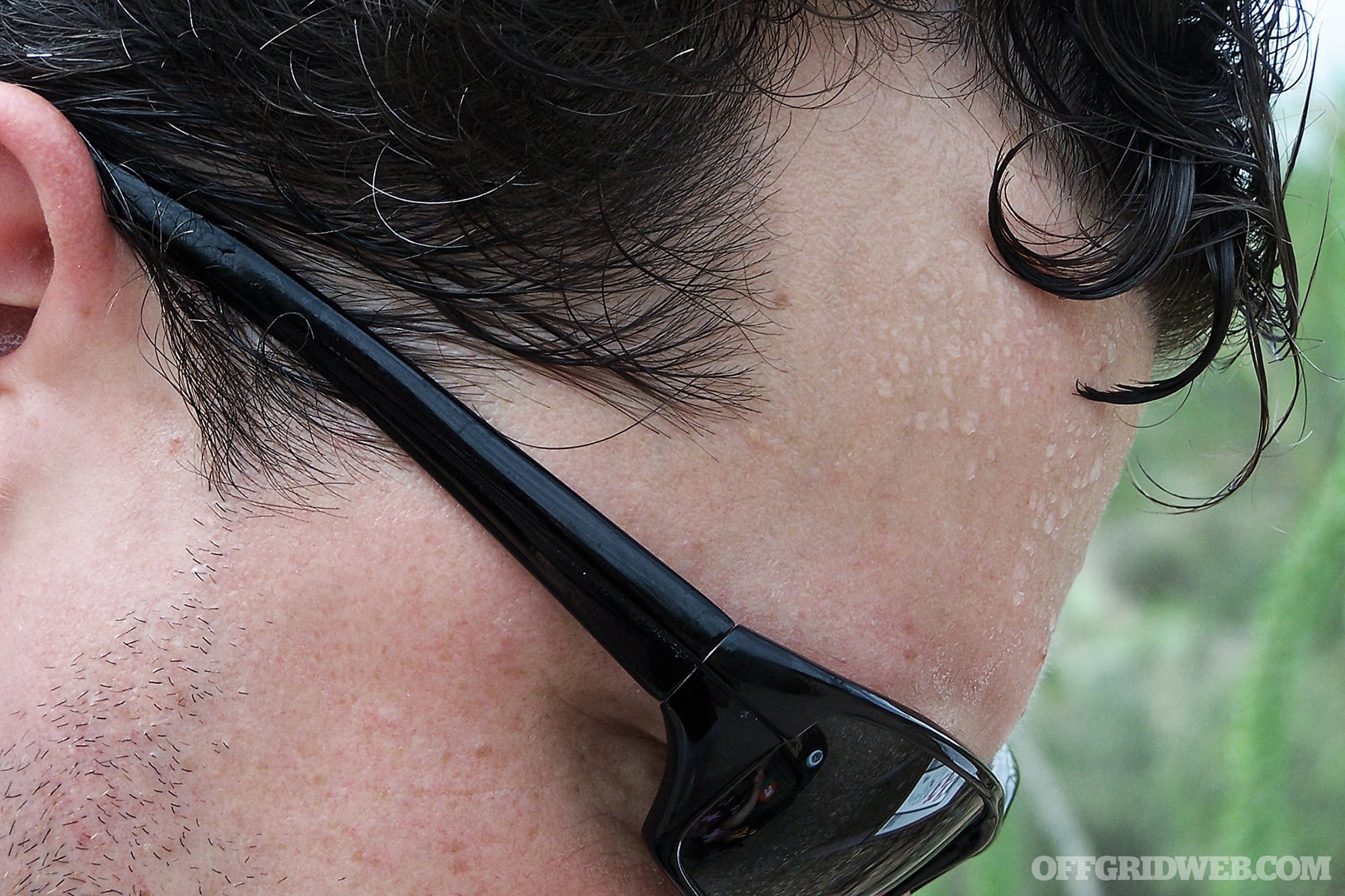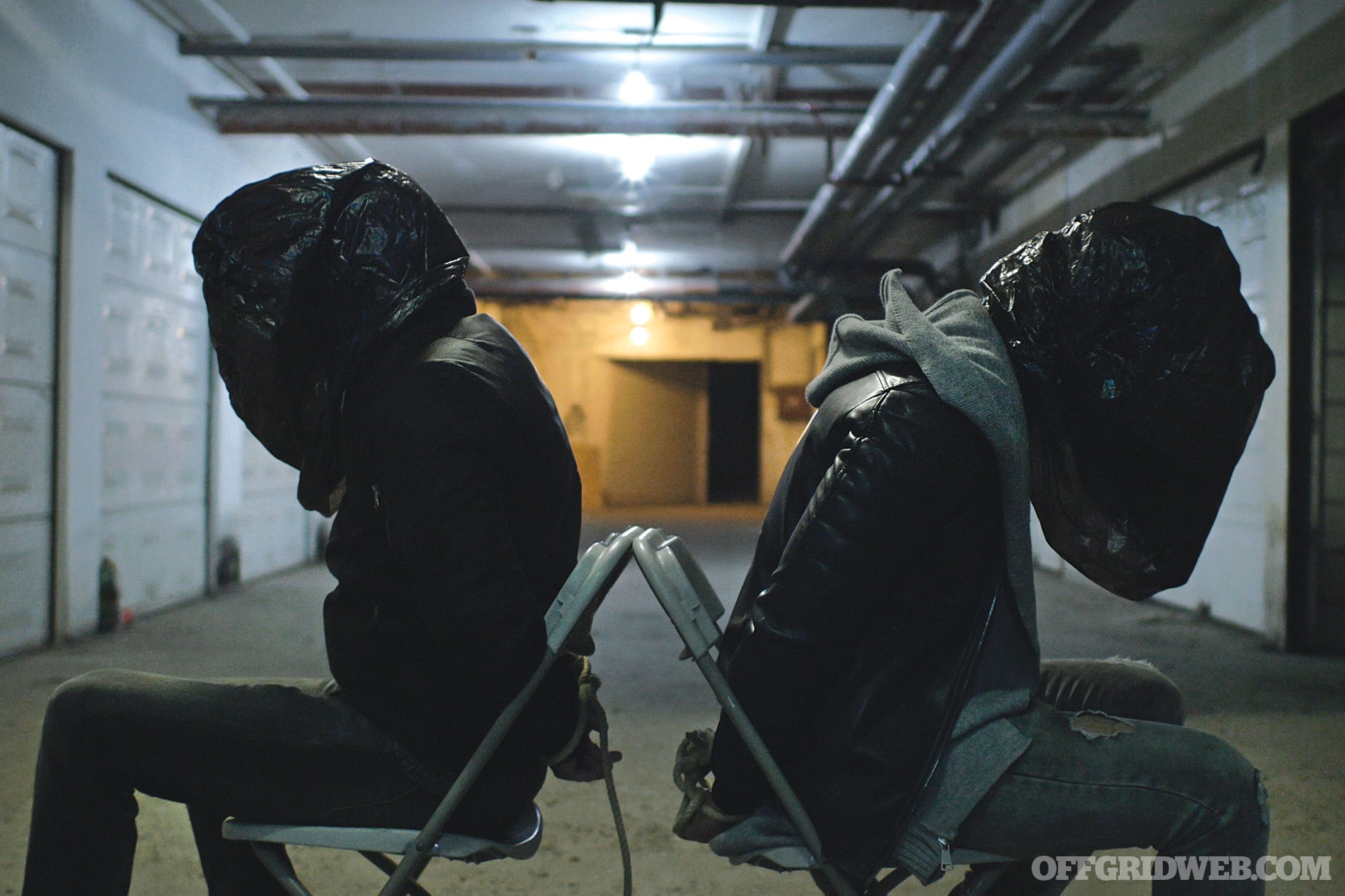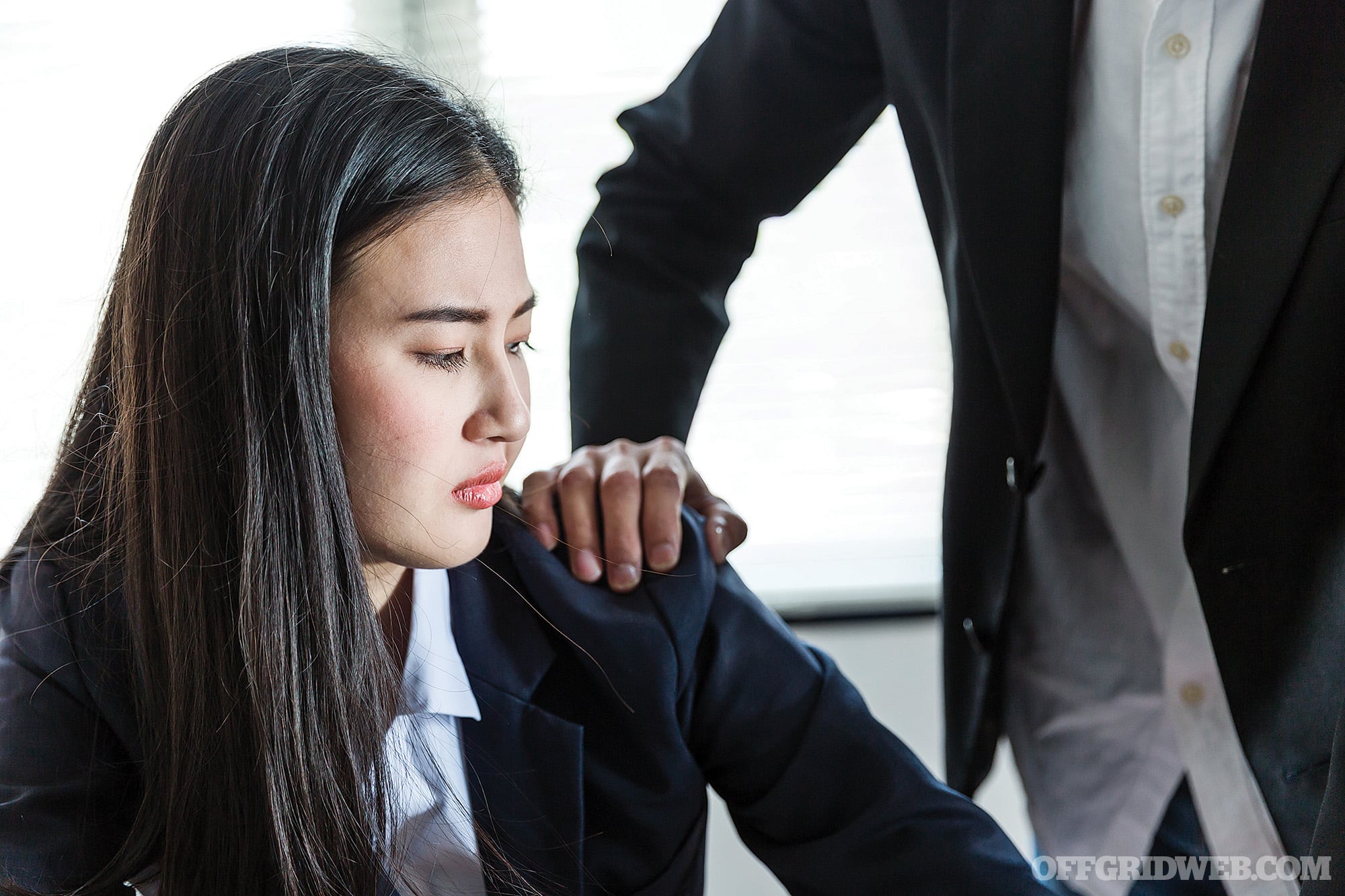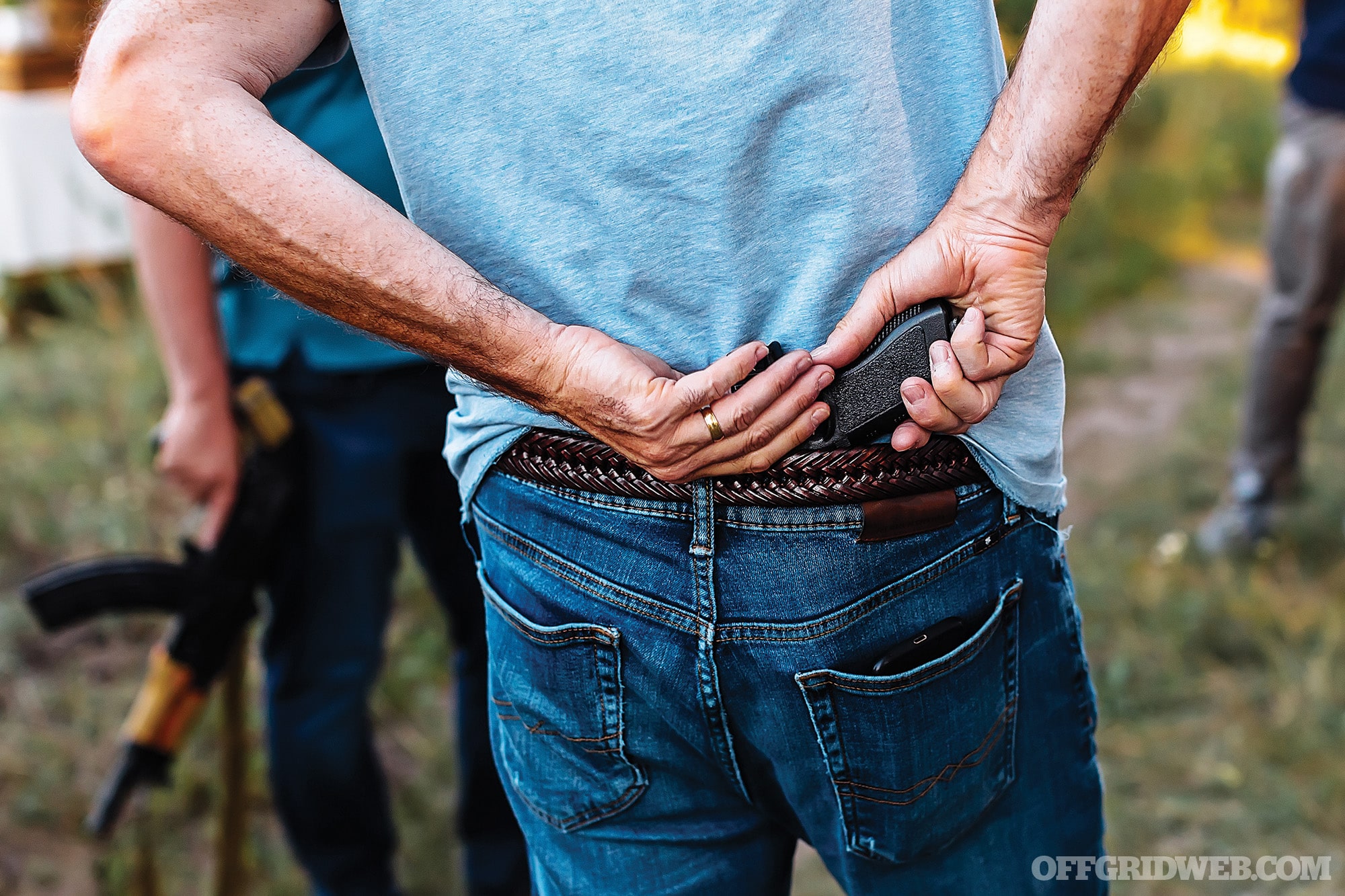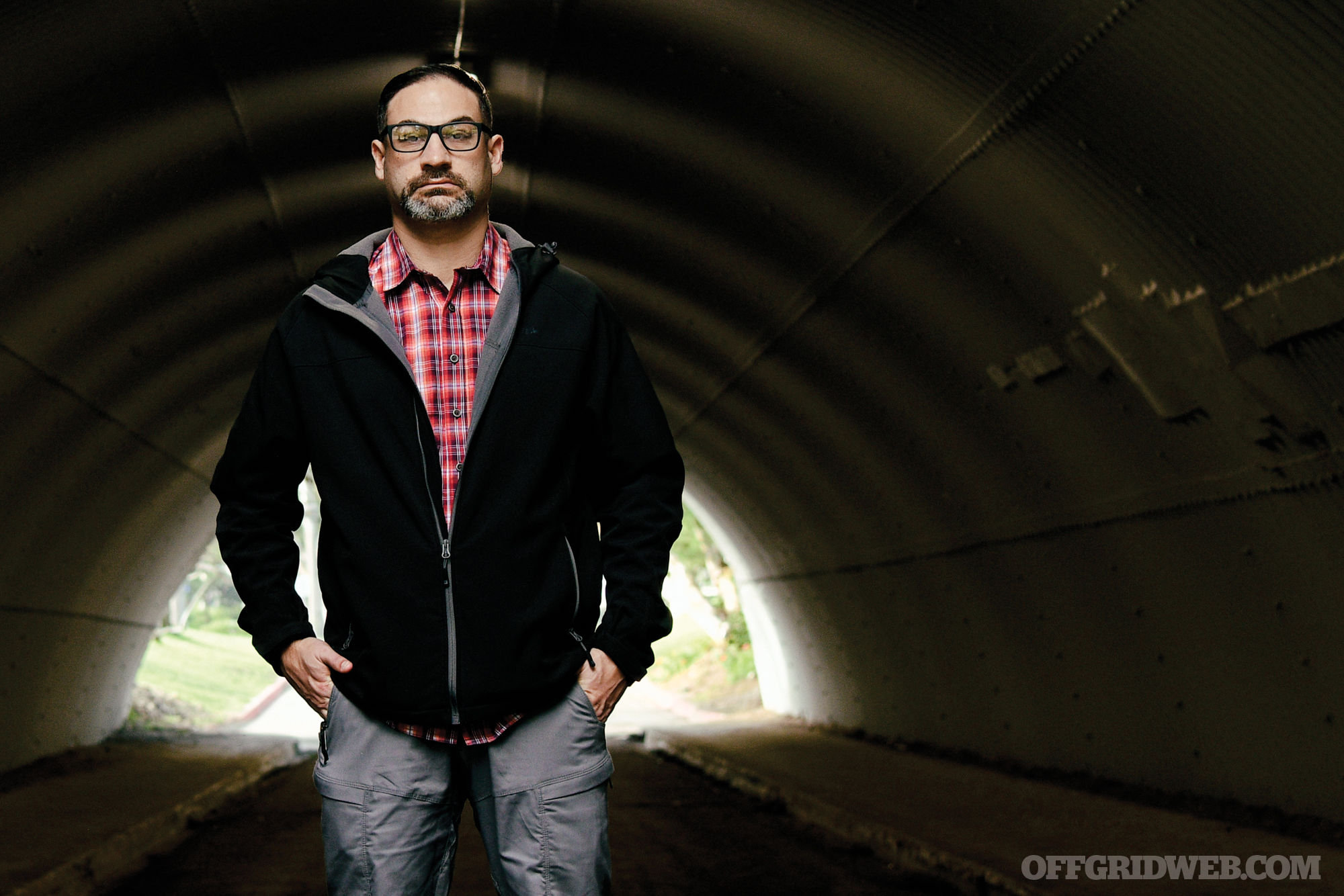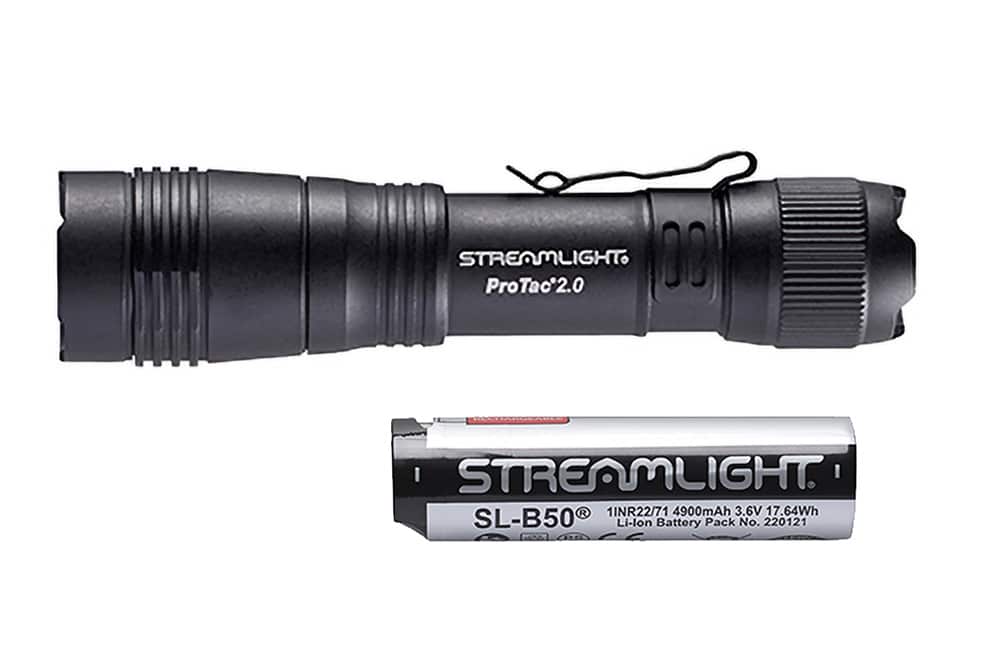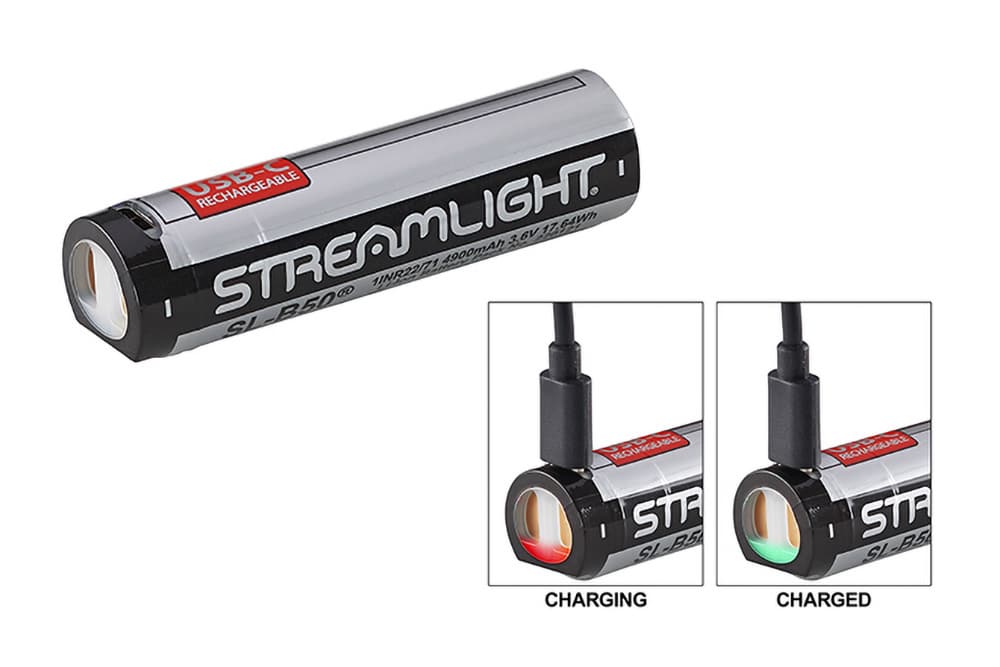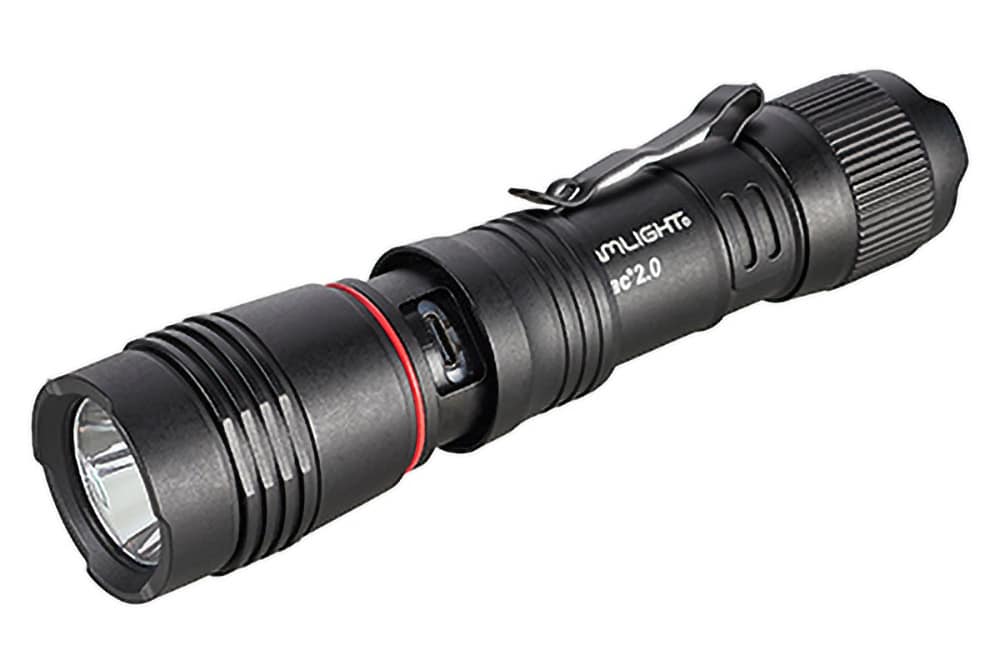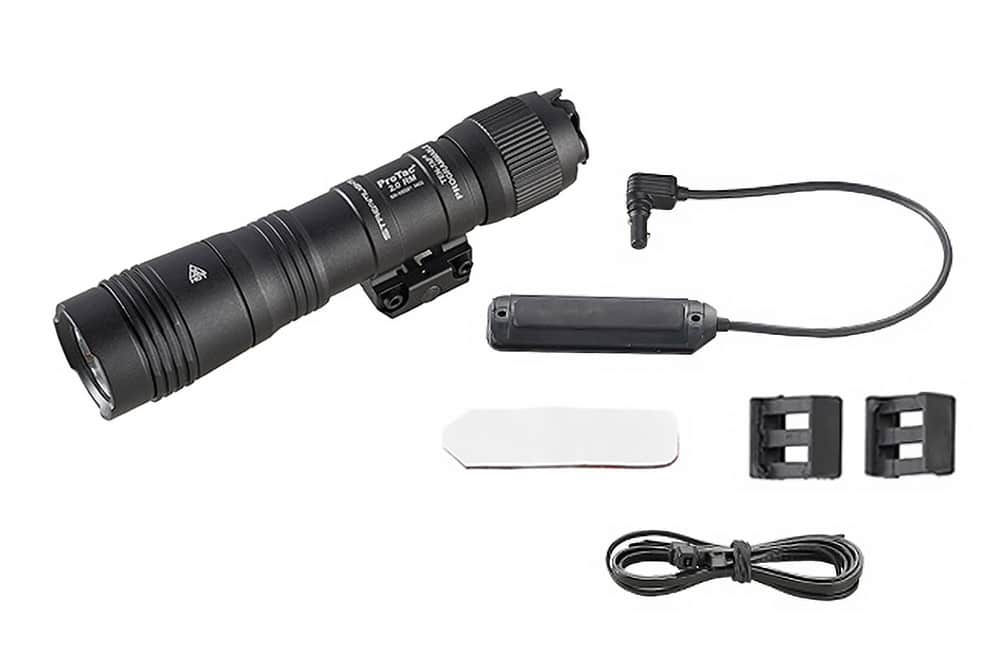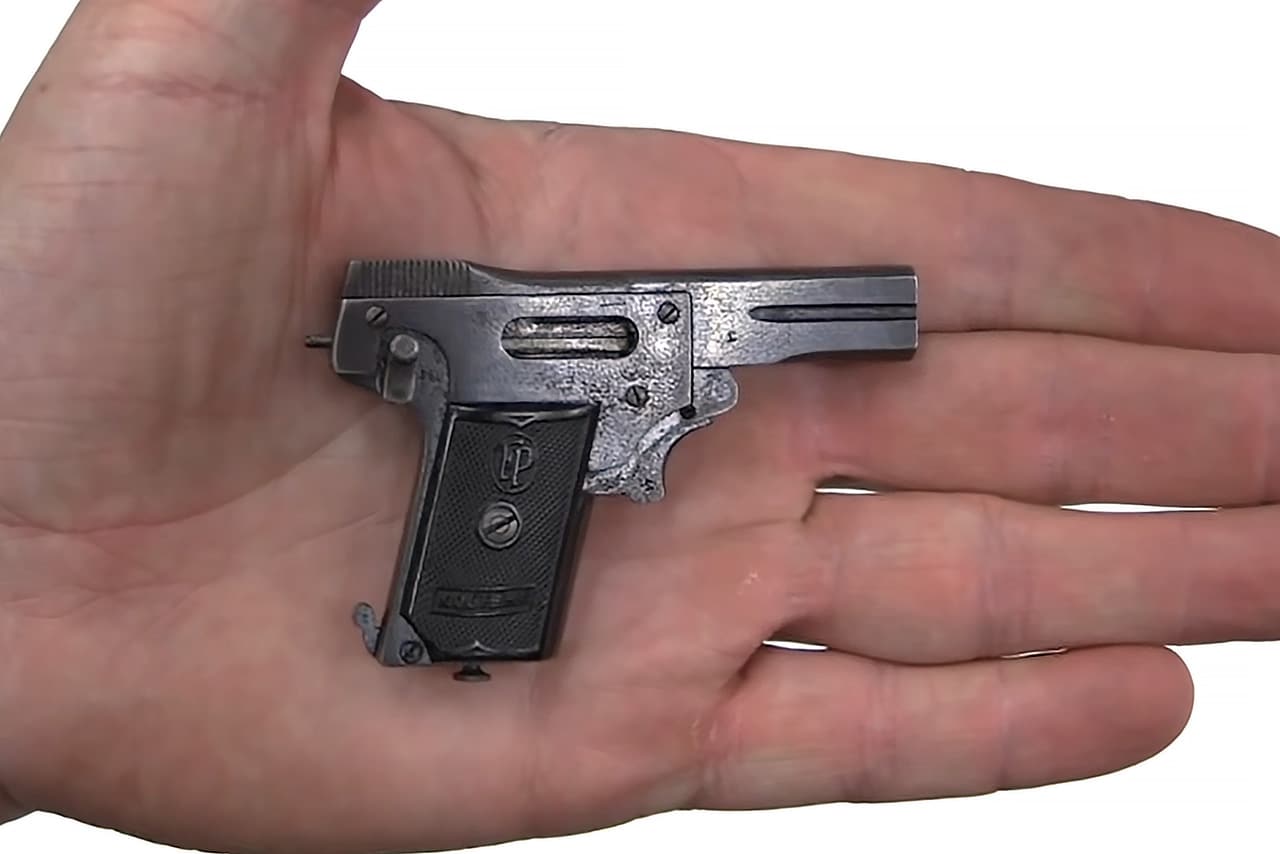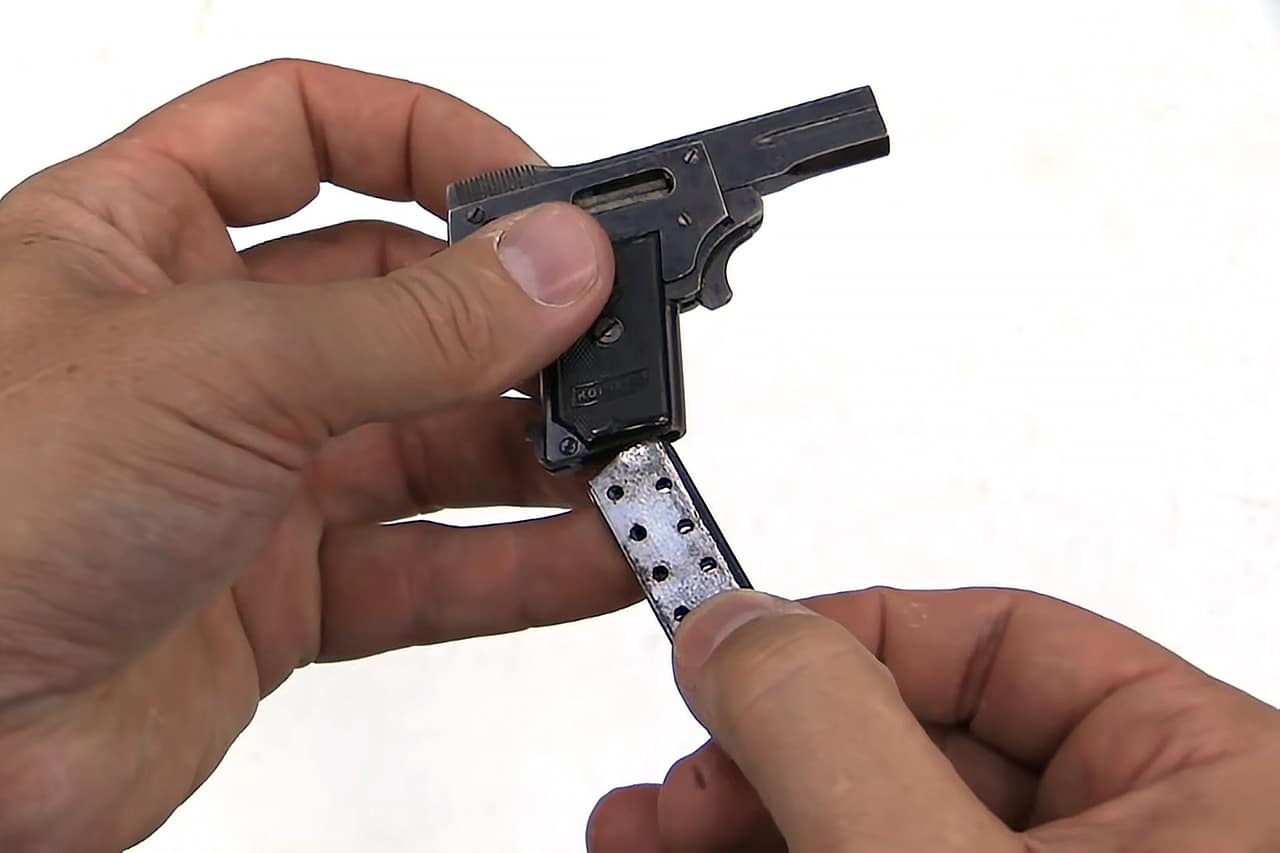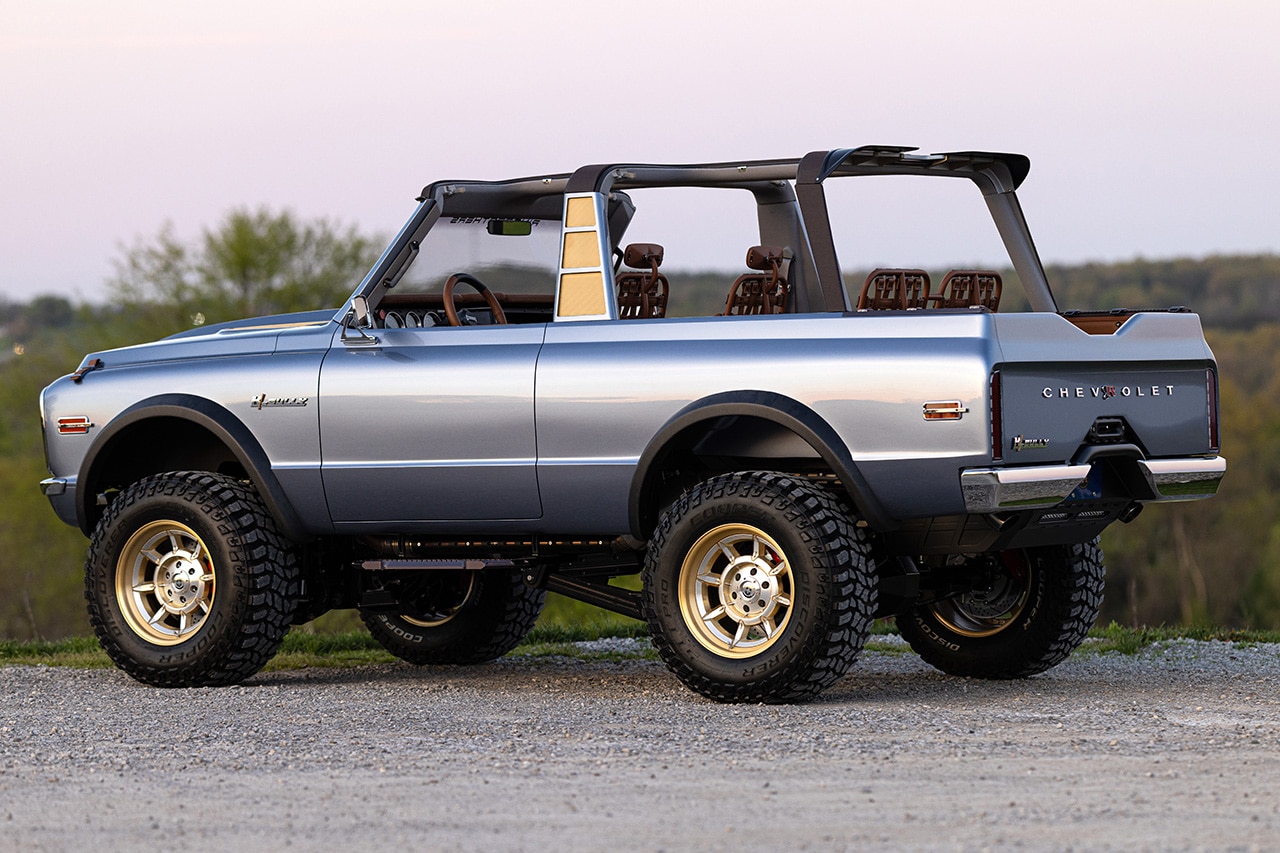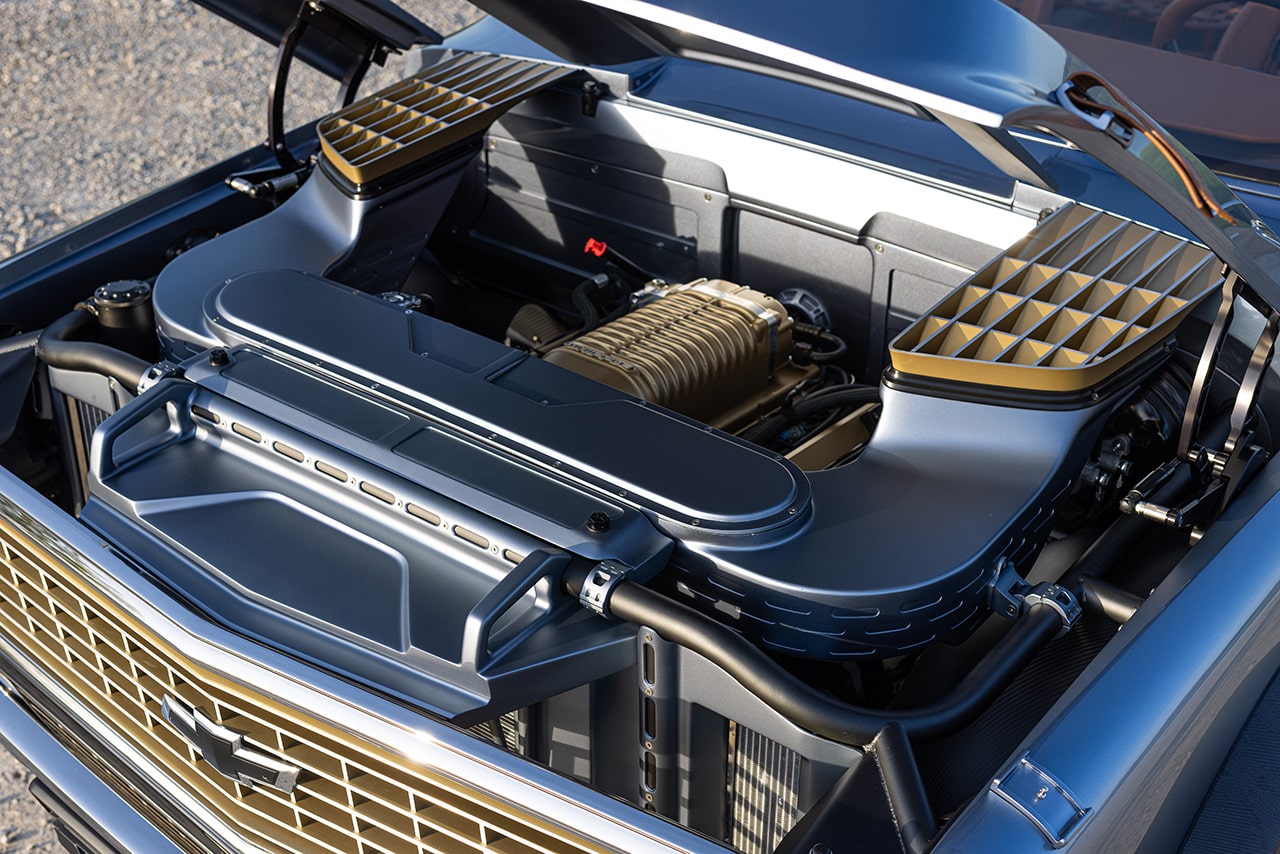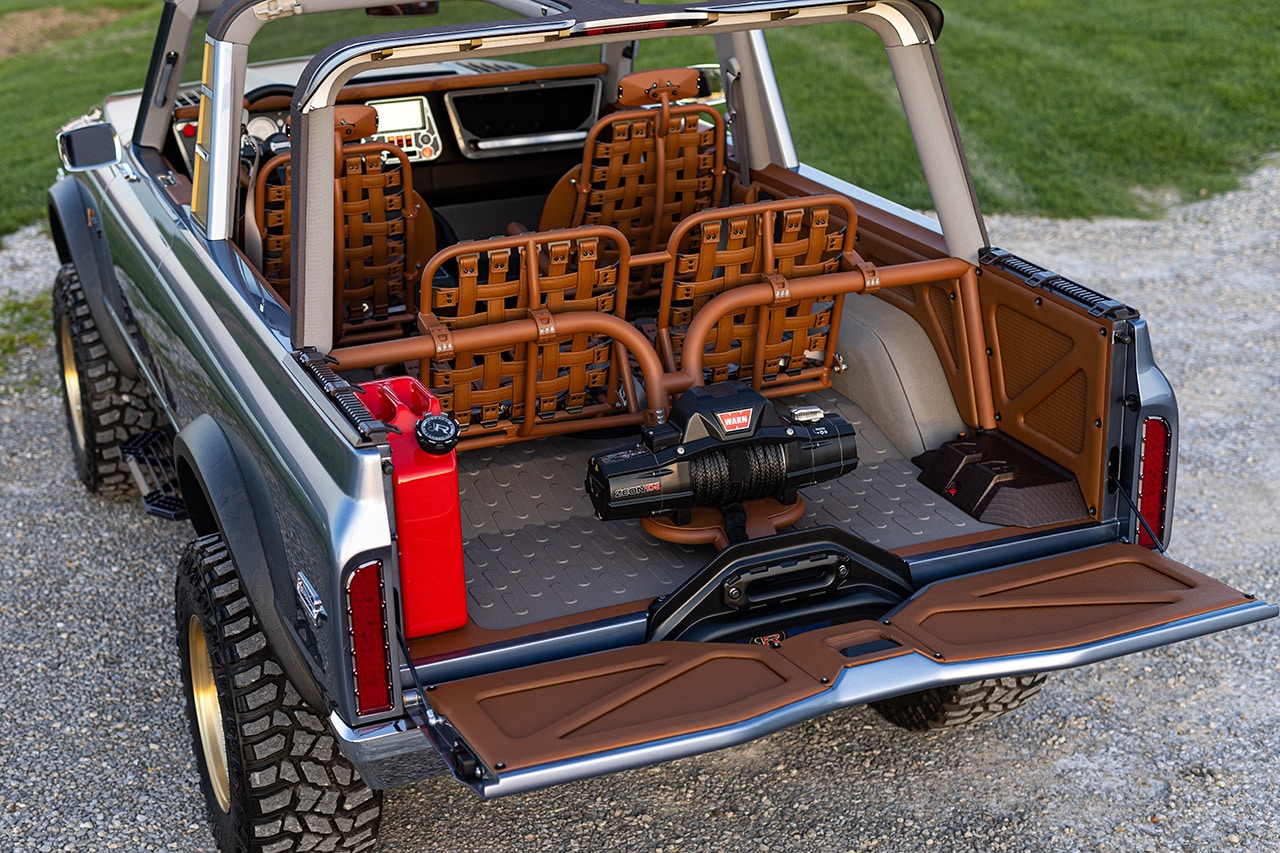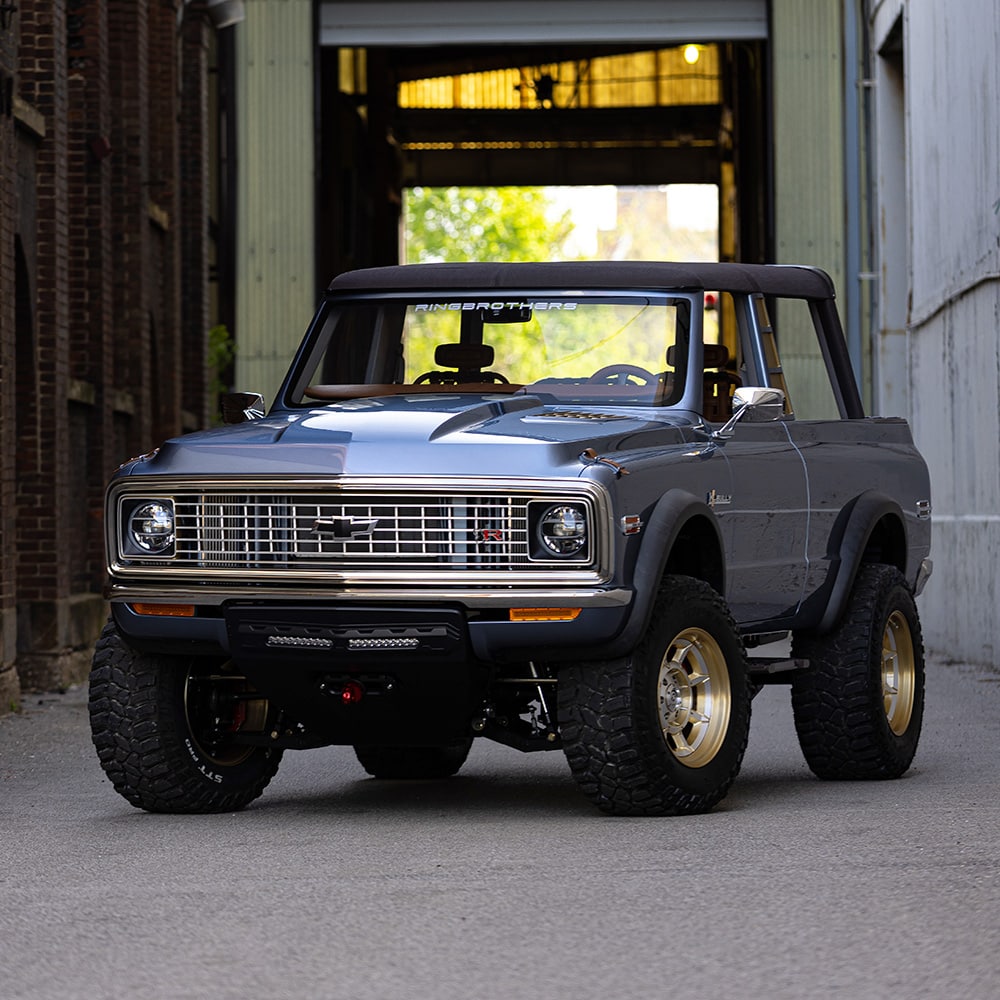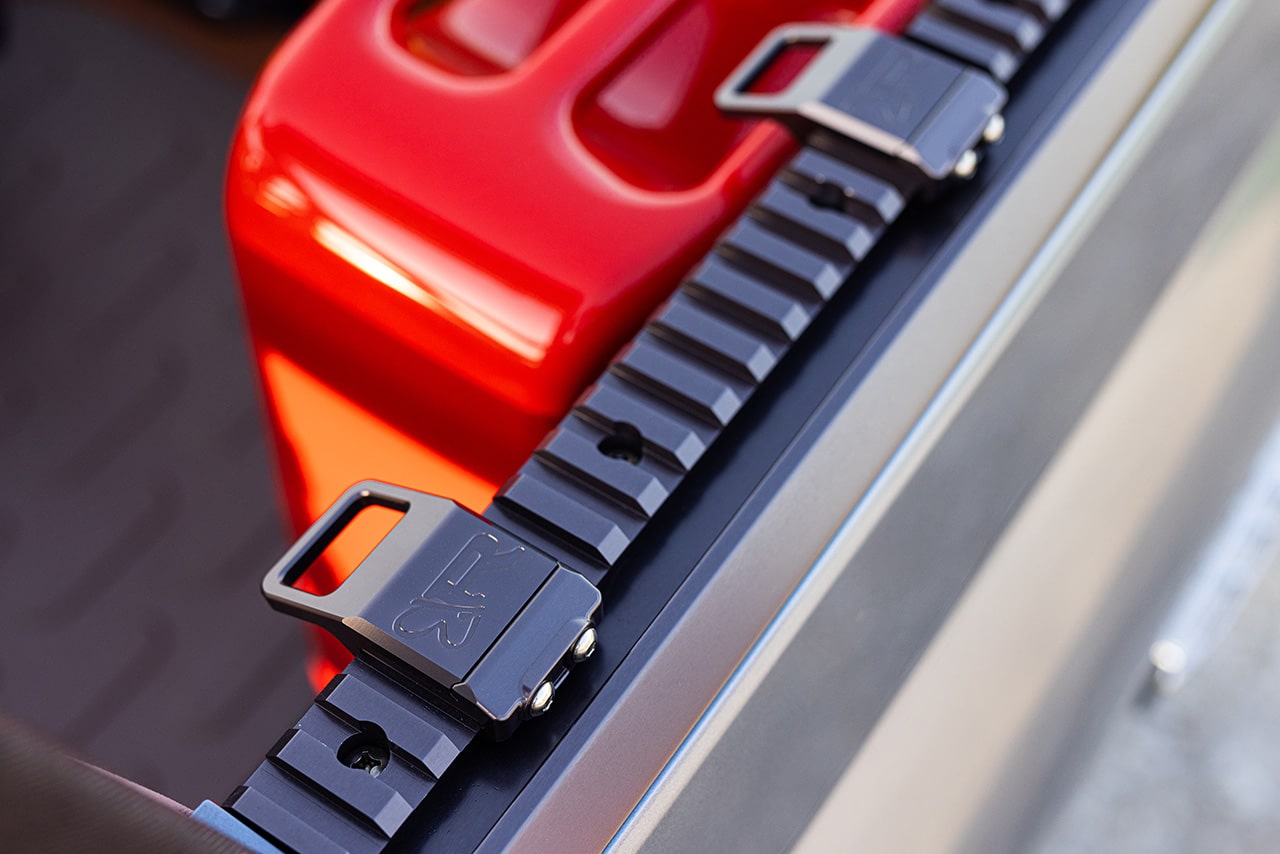In This Article
We’d love to say that Enrique “Ric” Prado is a man who needs no introduction. But that’s not true. On the contrary, Ric has dedicated his life to secrecy and security. A life-long veteran of America’s clandestine fight to suppress oppression, Ric has never actively sought fame or glory. The fruits of his labor remain, by and large, entombed in a casket of red tape and rubber stamps marked “Classified” or “Top Secret.” The scourge of Communism — real Communism, not the white-washed ideal praised in coffee shops and collegiate lecture halls — stained his life at a young age and set him on a five-decade mission that carried him literally around the world. From the streets of Miami during the dawn of the Cocaine Cowboys, to the jungles of Latin America, to the skies over Baghdad, Ric has cashed in his shot at the American dream to defend all of ours.
We recently sat down with him, following the release of his book Black Ops: The Life of a CIA Shadow Warrior, to discuss his life in the sequestered and oft-misunderstood world of covert operations.
This article was originally published in our sister publication, RECOIL magazine. Photos by John Jackson.
Ric Prado Interview
RECOIL: Tell us why and how you and your family emigrated to the U.S. from Cuba.
Ric Prado: By the age of 7 or 8, during the culmination of the Castro Revolution, I saw the consequences of a firefight two feet in front of me. Shortly after Castro gaining power on January 9, 1959, I witnessed the atrocities being committed in the name of the Revolution: three men hanging from trees with signs around their necks which read “Counter-Revolutionaries.”
Above: Ric's last supper with his family in Cuba before his solo voyage to the US.
All businesses, including my dad’s modest coffee roasting company, were confiscated by Castro. My dad saw the writing on the wall and decided to flee the island for freedom (which only the U.S. provides). Because of corrupt political machinations, my parents were not granted the mandatory exit permit (U.S. visas were not the problem). So, my dad found the “Peter Pan” program, which was facilitating the departure of kids under the age of 15 via the Catholic church.
As an only child, I flew solo to the U.S. at the age of 10. I immediately was sent to a Catholic orphanage in Pueblo, Colorado. My parents were able to flee the communist yoke eight months later. I truly believe that these three experiences — war, solo departure, orphanage — “forged my metal” for what would be my path in life.
What was your childhood like in Miami? What were some people or events that influenced you to take your current path?
RP: I got mixed up with a rough crowd in high school — no drugs but lots of fighting. I had decent grades in school, but my conduct was not. The tipping point for my course correction happened in my first year of college in Miami Dade: 1971, hippies protesting the Vietnam war announced the intention to burn the American flag the following day. “Not on my watch!” I said to myself. So, I called a few of my fellow street rats, and when the 15 to 20 hippies showed up to take down the flag, the five of us plowed right through them. Torn T-shirts and beads all over the place, but the American flag yet waved. It was the first time in my life that I felt proud of my violence. Four months later, I joined an elite Air Force unit with the solemn intent of fighting in Vietnam.
What did you do in the military?
RP: I qualified to enter the pararescue pipeline in 1971. I thought I was a tough, fit kid but the initial experience was humbling. Still, under the “ain’t dead, can’t quit” mantra, I gutted it through and got my coveted maroon beret in late 1972.
Can you talk a little about what the pararescue training was like?
RP: Pararescue was one of the final hammer-strikes forging my character. During the six-week selection, we did two-a-days (pool and PT) six days a week. Like most SOF units, our attrition rate was 80 percent. Not only was the physical training brutal, but the mental load of eventually becoming an EMT-2 was also quite a challenge.
We did EMT-1 training and simultaneously pre-SCUBA preparation at Sheppard AFB, Texas — that was brutal! SCUBA school is arguably the most demanding course of most SOF pipelines. I had the slight advantage that I was already advanced SCUBA qualified (a passion that started in ninth grade), and that allowed me to sleep a little more, while my teammates had to study Boyle’s law, nitrogen-narcosis, decompression tables, and related illnesses.
It was still a beast of a challenge. Then, Jump School at Fort Benning was relatively “easy day.” But S.E.R.E school was no joke. We then entered what was then referred to as “Transition School,” which encompassed EMT-2 medical training, goat-labs, advanced parachuting — which included SCUBA jumps with about 130 pounds of gear — mountain climbing, and lots of PT … at altitude.
First time this Cuban kid from Miami saw snow was on a four-day trekking exercise through 3 feet of snow, in snowshoes. Last was a frosty night SCUBA jump into the dark abyss of a lake in Utah in 38-degree weather. That night we donned our berets for the first time.
How did you wind up at the CIA? Did you apply, or were you recruited?
RP: Like most things in my life, it was preordained. I was loving pararescue but with Vietnam winding down and no hope to test my skills, I lacked a sense of purpose. Yes, I was jumping almost weekly and doing great waterwork, but training only for training’s sake. In 1974, I applied to the Agency. “Not hiring, firing” was their blunt response.
I tried again in 1980 and was brought in on periodic contract as a paramedic supporting CIA’s elite Special Activities Division, Ground Branch. I represented myself well, I was “fit as a firetruck,” and when President Reagan declared war on Latin American communism, I was recruited into the ranks of SAD/GB, where I was home-based for over 10 years.
What was your first assignment for the Agency, and what was the onboarding process like?
RP: Like your first kiss, your first assignment is always unforgettable. Mine was arguably the most rewarding adventure of my career. In early 1981, I was PCS’d to Honduras, in alias, to support the anti-Sandinista “Contras” in their fight to regain their freedom. For the first 14 months of that program, I was the only CIA officer allowed in the Contra camps — this in order to hide the U.S. hand (covert action equals black ops).
Above: Ric and his family while receiving his first CIA medal for leading a team of native combat divers to blow up a port facility controlled by Sandinistas.
I slept in a jungle hammock for 3.3 years and loved every minute. Here, I lost my cherry in my first firefight, a Sandinista ambush, which we countered and subsequently leveled their camp using my new mortar class, via 82mm mortars. These were Soviet stock, again to hide U.S. involvement.
After the Contra program, did your Cuban heritage and language ability “corner” you to Latin and South American postings?
RP: My next two assignments after the Hondo/Nica deployment were to Latin America. First, Costa Rica covertly running the Contra program from the south. The third was to a country in South America (unnamed). This was my first counterterrorism gig, and where I recruited a Maoist terrorist. However, although I was a PMO (paramilitary officer), I was also a fully qualified ops officer/intel. So, being SAD, I was not constrained by geographical boundaries.
Above: Photos from Ric's first assignment with the CIA, training Nicaraguan anti-communist freedom fighters.
I subsequently PCS’d to the Philippines, Korea, and “Shangri-La,” a radical Muslim country in East Africa. I was the Chief of Station (COS). I returned to headquarters and was awarded the coveted Chief of Operations at our Counterterrorist Center (CTC).
How was the transition from being a full-time paramilitary officer to being a “traditional” operations officer, relying more on tradecraft than battlefield tactics?
RP: With the copious tradecraft training we receive at “The Farm,” our PMOs are well-prepared for the transition. In fact, it is mandatory for PMOs to first and foremost be intel-collecting ops officers. I had the added advantage that I worked in a men’s haberdashery in my junior and senior high school years, so I learned to “clean up well.”
As much as I loved my kinetic PM days, I found the primary CIA mission — collect intel and conduct covert ops (black ops) — the most exciting. Nothing like swimming in dangerous waters undetected. My recruitment of a Maoist terrorist and my surviving a Philippine New People’s Army (NPA) “Sparrow” hit team attack really floated my boat.
You were one of the original members of the Agency’s Bin Laden task force. How did you wind up there, and what made the CIA dedicate a whole station to one individual?
RP: Yes, I am Plank Owner of that task force, better known as Alec Station. I had just returned from my Chief Liaison job in Korea and had taken OpCon of CTC’s Palestinian Branch when the C/Ops pitched me about being the Deputy Chief of Station for this effort. I had just gotten my GS-15, and this was heaven sent.
Above: Ric at First Coast Firearms with an M240B, which he carried while assigned to 20th SFG.
Mike Scheuer, the COS, was a senior analyst, and he is the first to develop the theory that Bin Laden was a major organizer of radical Islamic terrorism. We started with a small crew of about eight, all but two analysts.
Within 10 months, we had uncovered 10 times the intel we had prior. And we had him under extreme vigilance, while he was in Khartoum, Sudan. Special Forces legend Billy Waugh was the chief of surveillance for the station, working for my great boss and friend, Cofer Black. Billy had “made book” on UBL and had full documentation of his patterns of life.
Billy, via Cofer and Alec Station, kept proposing that we bring Bin Laden to justice based on the copious amount of intelligence that was pouring in from multiple sources, including unilateral and liaison. Unfortunately, that administration did not have the political will to approve such a venture. Mind you, Billy could have killed him with a pencil (his quote), but we were confident that we could render him to justice with minimal resistance.
We all enjoy 20/20 hindsight, but if we would have been allowed to do the deed, the USS Cole, our two embassies in Africa, and perhaps even September 11th could have been disrupted.
You also worked at the CTC — the Agency’s Counter-Terrorism Center. How did that assignment differ from your field postings, and how did the CIA’s focus on terrorism change over the years you spent there?
RP: Well, my South America tour was under CTC’s mandate. Same with my time in the Alec Station. After my tenure as East Asia Deputy Division Chief for the community’s Korea program, I returned to the fold of CTC in May of 2000, first as Chief of International Terrorism and subsequently as Cofer’s Deputy for Operations (referred to as Chief/Ops).
CTC was cutting-edge CIA. It was the epicenter of all source intelligence gathering and operational initiatives dealing with the Global War on Terrorism. It was a dynamic place to work with a plethora of dedicated professionals, operators, and analysts alike. And yes, terrorism became the “flash bang grenade” that shifted the focus of the whole community toward the global onslaught. After Sept. 11, CTC was the biggest entity in the CIA.
What was your final posting before retirement? And when did you transition out of active service with the Agency?
RP: After my year as CTC C/Ops, I developed an operational concept that Cofer and Jose Rodriguez loved, for going after the soft underbelly of any terrorist organization: their worldwide support mechanisms! The idea, which I briefed to then Vice President Dick Cheney and Condi Rice, was to establish patterns of life of two to three senior support elements for every terrorist group who could threaten us.
The concept was disruption — if we were receiving major indicators that target group was planning an attack against the U.S. or its allies, we could neutralize those pre-established targets for rendition, local police intervention, or whatever else the president of the U.S. would approve under CIA’s Title 50 Authorities.
After senior CTC management, which included me, realized that we were never going to be allowed anything more than long-term surveillance, we decided to disband the team, as it had become nothing more than a “paper tiger” that briefed well.
Shortly thereafter, in the early part of 2004, I retired from the CIA. I received the Distinguished Career Intelligence medal and the George Bush medal for Excellence in Counterterrorism, among others.
Above: A sampling of career tokens, encased in a shadow box, including an assortment of carry knives. “I fear knives, so I figure so does everyone else. I always carry two.”
We understand that you also spent some time working for Blackwater after retirement. How did that opportunity come about, and what did you do for them?
RP: I had met and befriended Erik Prince while I was Chief/Ops. When I started my “special program” described above, I asked Erik to facilitate the kinetic training me and my crew needed to carry out the missions.
I chose Blackwater because we could train there anonymously and with the best of the best instructors. Shortly after my retirement, Erik pitched me to come work for him. His patriotic idea was to allow me to bring my talents and my networks to the intel/CT community writ large.
Above: Serving as a fill-in door gunner on a Little Bird in Iraq, during his time with Blackwater.
My title was VP for Special Government Programs (wink!). I cannot go into much detail because black ops was fully vetted and cleared by CIA up to and including my CIA tenure. The rest of what we did in Blackwater for the community, which was a lot, remains classified, although some things have leaked maliciously. I had the best time of my career working at Blackwater. And enjoying the fact that Erik would train with us in all aspects of the trade. Great times indeed.
Have you had the opportunity to pursue any other consulting or private sector work since then?
RP: Yes, I taught at Advance Special Operations & Techniques (ASOT) at Fort Bragg for seven years. There I worked with some of the best SOF elements and instructor cadre. I am very proud of my time supporting the ASOT and ASOT Managers Course.
Earlier this year, your book Black Ops: The Life Of A CIA Shadow Warrior was released and has since become a New York Times bestseller. Who or what prompted you to tell your story?
RP: The idea started via my former boss, Cofer Black, whom I had recruited for Blackwater. He would harp at me incessantly about using my life story as platform to tell the story of the real CIA and the true ethos of our colleagues. I did not listen.
Then, my oldest son insisted I write my memoirs for the family, and that is when I started writing. Like all things in my life, I did not plan for it, but the Good Lord guided me, sometimes with a 2×4, toward publishing. First, Steve Coll (Pulitzer Prize winner) and then Annie Jacobson both interviewed me for books they were working on, and both encouraged me to make the leap.
Two things were catalysts: 1) My name and special projects were maliciously leaked in 2009. My name appeared in the front page of the news, tying me to CIA death squads. The importance of this is that my “fig leaf” had been ripped off and in a very negative way. 2) Post-retirement, I had time for introspection. The fact that we, a tiny Agency, have 139 stars on our Wall of Honor, and about a third of those are post Sept. 11, I realized that I needed to take up defending their honor and sacrifices and make them public knowledge.
After all is said and done, that was the driving force for finally pulling the trigger on Black Ops. By the way, it also made Amazon Books Editor’s number-one pick last month.
From an emotional/psychological standpoint, how were you able to reconcile the prospective publicity you would likely receive from this book with the inherent desire to remain anonymous and private, a staple requirement for intelligence officers?
RP: Men like us enjoy a passion and conviction that makes us who we are. The old saying “if you’re going to be a bear, be a grizzly” comes to mind. The leaking of my name and the terrible picture that Hollywood paints about my colleagues and what the Agency does is always portrayed as treasonous, treacherous, corrupt. Those men and women who adorn our Wall of Honor deserve better representation. Names like Mike Spann and Jennifer Mathews, the latter an early UBL/Alec Station member, deserve a better history, especially for their offspring.
Was there a formalized review or approval process with the CIA to get your manuscript published?
RP: Absolutely! My book underwent a thorough scrub for protecting sources and methods. It took six months to get it through, but what I wrote was fully vetted and approved by CIA reviewers.
In television and movies, intelligence officers are always using far-flung gadgets and tech to accomplish their missions. Did your experience as an Operations Officer involve anything like this?
RP: Unadulterated “Bravo Sierra” (BS)! In Black Ops, I document real sexy CIA ops, conducted by committed patriots in places most people never even visit. We get no Aston Martins or clothing allowance for Brioni suits, but the men and women of the CIA deliver, in spite of the politics that often hamstring us.
While gadgets and disguises and diplomatic wine mixers are a part of legacy case work, you spent much of your career in paramilitary covert action — the “pointy end” of intelligence operations. What was that equipment like, especially in the early 1980s when you started out?
RP: Well, while supporting the Contra project, I carried an AR-15, a Browning High Power 9mm pistol on my hip, a straight-blade knife, a pair of golf-ball grenades (V-40s I think they were called), and my trusty Walther PPK/S in an ankle holster. In other danger tours, like in the Philippines, I carried an MP5K in my armored vehicle, first a Browning HP then a Glock 19, a knife (or two), and again, an ankle piece.
When I serviced “walk-ins” (volunteers) in the PI, during the first Gulf War, I would make my meeting at the high-end hotels. They screened everybody for weapons, but I noticed (awareness rules in our business) that they only used the metal-detecting wand above the knee. Ergo, I carried two five-shot Lady Smith revolvers, one on each ankle, with a backup ammo strip. No gun for all seasons!
How did the Agency itself evolve or change over the course of your career?
RP: Well, in my case, it started with an elite military posture while working in and out of our 10 Contra camps on the Nica border. Tradecraft was not always employed, but situational alertness was mandatory. This was PMO work at its finest. The transition to fighting the Cold War under U.S. Embassy cover was definitely tradecraft-based and, of course, armed in EDC mode.
Then came terrorism, and our operational world changed dramatically from diplomatic and business circles to dealing with rougher characters. In contrast to solo operations of the Cold War, we now often had to employ “shadow surveillance” by our highly trained cadre. I used to refer to them as my ghosts with teeth.
By the way, counterterrorism is the best thing that ever happened to our PMOs — from second-class citizens in the late ’70s and early ’80s to fast trackers and Chiefs of Station in the many danger posts.
Above: Ric and his elite close-surveillance team in an undisclosed African country where he served as Chief of Station.
After decades of high-tempo operations, how do you spend your time nowadays?
RP: Well, currently, I am omni-focused on the promotion of Black Ops. Next, however, I plan to ride my horse, my motorbike, and spoil my wife any way I can. After 51 years of “God and country,” I am looking forward to some me time. Don’t get me wrong, this dog can still hunt and will if I must.
Do you still get out and shoot?
RP: Religiously! Like physical training, fighting skills are a way of life you just don’t leave behind upon retirement. Because of my extensive training and temperament, I could not ignore a woman or child being abused or a cop being overwhelmed. Like Jack Paladin used to say: Have gun, will travel!
Above: Ric at the range with a kitted-for-duty carbine, courtesy of First Coast Firearms. The PJ hat worn in memory of teammate Cliff Kunde.
Based on your experience in countries where citizens could not defend themselves from the threat of terrorism or communism, what are your thoughts on the relevance of the 2nd Amendment?
RP: The 2nd Amendment is the backbone of democracy, along with our 1st Amendment. There’s not a single communist country in the world that allows their civilian population to be armed. Like in many of our cities, the states with the strongest anti-gun rules produce the most violent and dangerous cities.
Evil exists at every level. Whether the long tentacles of communism, the bloody outcome of terrorism, or just street survival, we are living with the presence of evil. It’s not a police officer’s job to protect your family, home, and life. They are deterrents when present or investigators of the crimes committed against you. It’s our personal responsibility to take care of our own, first.
You spent some of your childhood and the first half of your career face-to-face with the threat of communism. What are your thoughts on the current situation in Ukraine and how it might affect the U.S.?
RP: Ah, leaving the best for last! The one and only goal of both Russia and China is world domination. Radical Islam has similar intentions but using a different excuse, religion. We, the U.S. of A, are the primary enemy of those predators.
We — our military, intel, and police forces — are the sheepdogs. Feared by the wolves and unappreciated by the sheep. The Western world needs to wake up and realize that socialism is only a mask communism wears to lure you into their lair and devour your freedom. God knows we have ample examples that it does not work for any democracy. See Ukraine, Cuba, Nicaragua, Venezuela, and many others. All once thriving countries now reduced to fourth world status.
What’s your current EDC?
RP: Ah, there is no gun for all seasons or holster for all reasons. It all depends on what I can get away with — with no one knowing I am carrying. If I am in my summer three-piece-suit (shorts, T-shirt, and flip-flops), I often carry my SIG 365 SAS. With jeans and an ample shirt, I conceal my Glock 43 with Shield Arms 10-round mags.
Above: A sampling of Ric's carry gear, including the Walther PPK, an iconic spy sidearm. In Ric's words, “no gun for all seasons, nor holster for all reasons.”
Jacket viable? Glock 48, again with a Shield Arms 15-round mags. In every option, I always carry a spare magazine and a knife. I wear my knife on my left side. Why? Because at a fit 71 years of age, if I am attacked, my pistol (appendix or strong-side carry) is my go-to option. If that is negated, then my left hand comes into “sharp” play.
About Ric Prado
Ric enjoying an Arturo Fuente Opus X maduro cigar.
Name: Enrique “Ric” Prado
Age: 71 years young
Hometown: Hialeah, FL
Family: Married 40 years to Carmen; we have three grown offspring.
Recommended reading:
- Black Ops: The Life of a CIA Shadow Warrior
- To Dare and to Conquer by Derek Leebaert
- Surprise, Kill, Vanish by Annie Jacobsen
- Directorate S by Steve Coll
- Warrior of the Light by Paulo Coelho
Favorite cigar/drink pairing: Arturo Fuentes Maduro, Macallan 12 Single Malt or Zakapa Rum
Selected EDC items: I love the flexibility of pairing my SIG 365 SAS and my SIG X Macro; Bob Kasper Dragon fixed blade fighting knife.
URL: ricprado.com

